National Mission on Edible Oils - Oil Palm (NMEO-OP)

- 11 Jan 2025
In News:
- Union Minister Shri Shivraj Singh Chouhan urges states to accelerate efforts under the National Mission on Edible Oils - Oil Palm (NMEO-OP) to enhance domestic production of edible oils and reduce reliance on imports.
Key Facts Regarding the NMEO-OP Scheme:
About the Scheme:
- Objective: Enhance domestic production of crude palm oil (CPO) and reduce India's dependence on edible oil imports.
- Centrally Sponsored Scheme: Focuses on expanding oil palm cultivation in India.
Key Targets:
- Area Expansion: Aim to cover an additional 6.5 lakh hectares by 2025-26, reaching a total of 10 lakh hectares.
- Production Increase: CPO production is targeted to rise from 0.27 lakh tonnes (2019-20) to 11.20 lakh tonnes by 2025-26, and further to 28 lakh tonnes by 2029-30.
- Per-Capita Consumption: Maintain a consumption level of 19 kg/person/annum until 2025-26.
Focus Regions:
- Special Focus: North-Eastern States and Andaman & Nicobar Islands for oil palm cultivation and CPO production.
Key Features:
- Viability Price (VP) Mechanism: Aims to protect farmers from market volatility by providing price assurance. Payments are made through Direct Benefit Transfer (DBT).
- Increased Assistance:
- Assistance for planting material increased from Rs 12,000/ha to Rs 29,000/ha.
- Special assistance of Rs 250 per plant for rejuvenating old gardens.
- Regional Support:
- For North-East and Andaman, an additional 2% of the CPO price is borne by the government to ensure fair payments to farmers.
- Special provisions for half-moon terrace cultivation, bio-fencing, and land clearance for integrated farming.
Oil Palm Cultivation:
- Origin: Native to the tropical rainforests of West Africa, oil palm is a new crop in India with high oil-yielding potential.
- Oil Yield: Oil palm produces five times the yield of traditional oilseeds per hectare.
- Types of Oil Produced:
- Palm Oil: Extracted from the mesocarp (fruit's fleshy part), containing 45-55% oil.
- Palm Kernel Oil: Derived from the kernel, used in lauric oils.
- Major States for Cultivation: Andhra Pradesh, Telangana, Kerala (98% of total production).
- Other Key States: Karnataka, Tamil Nadu, Odisha, Gujarat, Mizoram, Arunachal Pradesh, Assam, Manipur, Nagaland.
India's Oil Palm Potential:
- Cultivated Area: India currently has 3.70 lakh hectares under oil palm cultivation.
- Total Potential Area: Around 28 lakh hectares.
- Imports: India is the world's largest palm oil importer, with imports of 9.2 million tonnes in 2023-24, accounting for 60% of total edible oil imports. The country primarily imports from Indonesia, Malaysia, and Thailand.
Project VISTAAR
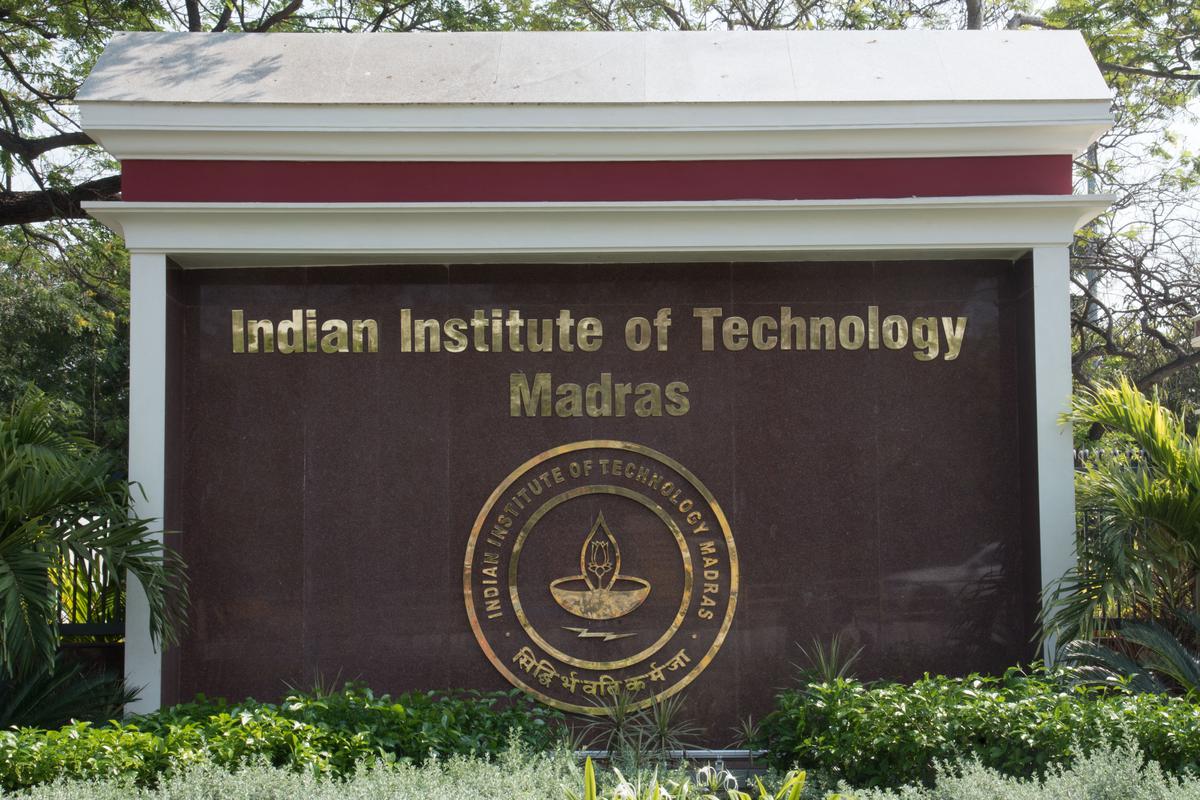
- 04 Jan 2025
In News:
IIT Madras has partnered with the Ministry of Agriculture and Farmers’ Welfare on Project VISTAAR (Virtually Integrated System to Access Agricultural Resources). MoU signed between the Ministry and IIT Madras to integrate information about agricultural start-ups into the VISTAAR platform.
Key Highlights:
Project Objectives:
- Digitalisation of Agricultural Extension: To enhance the efficiency and effectiveness of the agricultural extension system through digital platforms.
- Access to Start-Up Innovations: Provide farmers easy access to over 12,000 start-ups in agriculture and allied sectors, connecting them to technological solutions and innovations.
- Support for Sustainable Agriculture: Focus on making farming more sustainable and climate-resilient by promoting adoption of innovative technologies.
Key Features of VISTAAR:
- Integration of start-up data via IIT Madras' startup information platform and its incubatee, YNOS Venture Engine.
- Advisory services covering:
- Crop production
- Marketing
- Value addition
- Supply chain management
- Information on government schemes for agriculture, allied sectors, and rural development.
- Real-time, contextual, and accurate information to enhance decision-making and improve farming practices.
Significance of the Project:
- The platform will expand the outreach of agricultural extension services, providing support to farmers across India.
- It will ensure farmers access high-quality advisory services that are critical for improving productivity and income.
- Integration of start-up-driven innovations will aid in the adoption of climate-resilient farming practices.
- Timely and accurate information will empower farmers to make informed decisions and improve the efficiency of agricultural processes.
Impact on Farmers:
- Digitalisation will provide farmers with easier access to expert advice and resources, enhancing productivity.
- Improved access to government schemes ensures farmers can avail themselves of financial and technical support for development.
- The project aligns with national objectives of enhancing agriculture’s contribution to India’s economy and ensuring food security.
Operation Green Scheme
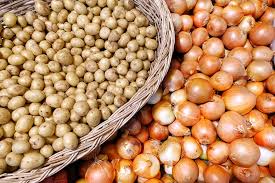
- 27 Dec 2024
In News:
The government’s flagship Operation Greens scheme, designed to stabilise crop prices and benefit farmers, has spent just 34 per cent of its allocated budget for 2024-25, according to a parliamentary report, even as onion farmers in Maharashtra reel from massive losses and potato shortages grip eastern states.
Key Highlights:
Overview:
- Launched: November 2018 under the Pradhan Mantri Kisan SAMPADA Yojana.
- Objective: Stabilize prices and improve farmers' income by enhancing the production and marketing of perishable crops, initially focusing on Tomato, Onion, and Potato (TOP).
- Expanded Scope (2021): Includes 22 perishable crops like mango, banana, ginger, apple, and shrimp.
- Implemented by: Ministry of Food Processing Industries (MoFPI).
- Funding: Managed by the National Agricultural Cooperative Marketing Federation of India (NAFED).
Key Aims:
- Reduce price volatility in agricultural markets.
- Minimize post-harvest losses.
- Strengthen farm-to-market linkages.
- Enhance farmers’ earnings by stabilizing market prices.
- Promote value addition and food processing.
Scheme Components:
- Short-term Interventions:
- Subsidies on transportation (50%) and storage (50%) to protect farmers from distress sales.
- Price stabilization during periods of surplus or shortage.
- Long-term Interventions:
- Development of farm-gate infrastructure like cold storage and processing facilities.
- Strengthening production clusters and Farmer Producer Organizations (FPOs).
- Building efficient agri-logistics systems.
- Promoting food processing and value addition capacities.
Key Features:
- 50% subsidy on transportation and storage costs for eligible crops.
- Projects eligible for 50% subsidy (up to ?50 crore per project), and for FPOs, a 70% subsidy.
- Demand-driven funding based on applications, with no fixed crop or state-wise allocation.
Key Findings from Parliamentary Standing Committee (PSC) Report (2024):
- Underutilisation of Budget: Only 34% (?59.44 crore) of the allocated ?173.40 crore for 2024-25 spent by October 2024, leaving 65.73% unspent.
- Slow Implementation: Out of 10 targeted projects, only 3 were completed by October 2024.
- Limited Impact on Price Stabilization:
- Onion prices fell by nearly 50% in Maharashtra, despite the scheme's intent to stabilize prices.
- Potato shortages in states like Odisha and Jharkhand due to weather-induced production dips in West Bengal.
- Inconsistent Policies: Export bans and fluctuating export duties caused frustration among onion farmers, undermining the scheme’s effectiveness in ensuring fair prices.
Impact on Farmers:
- Price Stabilization: Despite the scheme’s aims, price fluctuations continue to affect farmers, especially in Maharashtra with the onion price crash.
- Post-Harvest Losses: The scheme aims to reduce wastage by building infrastructure like cold storage, but challenges remain in implementation.
- Market Linkages: Attempts to connect farmers and FPOs with retail markets have not yet yielded significant results.
Operational Challenges:
- The scheme faces challenges in fulfilling its dual mandate of ensuring fair prices for farmers while keeping consumer prices affordable.
- The slow utilization of funds and incomplete infrastructure projects raise concerns about the effectiveness of the program.
- Inconsistent policy decisions, like the export ban and imposition of export duties, have contributed to farmer discontent.
National Farmers' Day
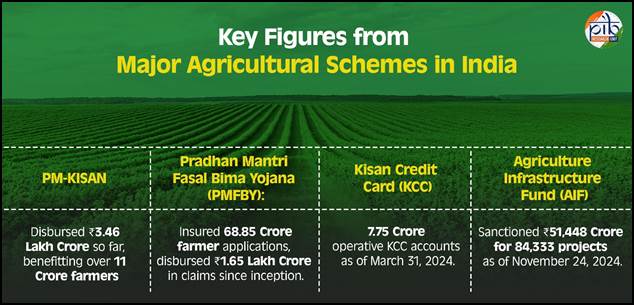
- 23 Dec 2024
In News:
National Farmers' Day, also known as Kisan Diwas, is celebrated annually on December 23rd to honor the vital contributions of Indian farmers and commemorate the birth anniversary of Chaudhary Charan Singh, India's fifth Prime Minister. A passionate advocate for rural development and farmers' welfare, Charan Singh's policies laid the foundation for several reforms aimed at uplifting the agrarian economy. His contributions continue to inspire government initiatives that prioritize the welfare of farmers, fostering sustainable agricultural growth and ensuring food security for the nation.
The Legacy of Chaudhary Charan Singh
Chaudhary Charan Singh was born on December 23, 1902, in Noorpur, Uttar Pradesh. His deep understanding of rural issues and commitment to improving farmers’ lives earned him the title of "Kisan Leader". Throughout his political career, he championed reforms such as the Debt Redemption Bill (1939), which alleviated the financial burdens of farmers, and the Land Holding Act (1960), which promoted fair distribution of agricultural land. He also advocated for Minimum Support Price (MSP), and his policies laid the groundwork for NABARD and other farmer-centric institutions.
Significance of Kisan Diwas
Kisan Diwas highlights the importance of agriculture in India’s economy and employment, with farmers constituting nearly 50% of the workforce. The day emphasizes the need for policies that address farmers' challenges such as climate change, financial constraints, and technological adoption. It also serves as a reminder of the necessity to empower farmers through innovative solutions, financial security, and sustainable farming practices.
Key Government Initiatives for Farmer Welfare
The Indian government has launched several schemes to address the challenges faced by farmers and support their socio-economic upliftment:
- Pradhan Mantri Kisan Samman Nidhi (PM-KISAN): Provides direct income support to small and marginal farmers.
- Pradhan Mantri Fasal Bima Yojana (PMFBY): Offers crop insurance to mitigate financial risks due to crop loss.
- Pradhan Mantri Kisan Maandhan Yojana (PM-KMY): A pension scheme for farmers to ensure long-term social security.
- Soil Health Card Scheme: Promotes efficient fertilizer use and soil health by providing farmers with personalized soil health reports.
- Farmer Producer Organizations (FPOs): These entities help farmers collectively access markets, reduce costs, and improve bargaining power.
- Modified Interest Subvention Scheme (MISS): Provides affordable credit to farmers, especially for agriculture-related activities.
- Kisan Credit Card (KCC): Helps farmers access timely credit for agricultural purposes at concessional rates.
Significant Budget Allocations and New Schemes
The government has drastically increased its budget allocation to the agriculture sector. From Rs. 21,933.50 crore in 2013-14, the budget has risen to Rs. 1,22,528.77 crore for 2024-25, underlining the government's commitment to farmer welfare and sustainable agricultural development.
Notable Initiatives:
- Namo Drone Didi Scheme: This initiative, aimed at empowering Women Self-Help Groups (SHGs), supports the use of drones for agricultural purposes, including fertilizer and pesticide application, with 80% financial assistance.
- Clean Plant Programme (CPP): Enhances the quality and productivity of horticulture crops by ensuring disease-free planting material.
- Digital Agriculture Mission: Aims to modernize farming with digital infrastructure, including crop estimation surveys and e-agriculture platforms.
- National Mission on Natural Farming (NMNF): Encourages chemical-free, sustainable farming practices.
Farmers' Role in Nation-Building
India’s agricultural sector not only sustains the livelihoods of millions but also contributes significantly to the country's GDP. In FY 2023-24, agriculture contributed 17.7% to the Gross Value Added (GVA). With over 54% of the country's land dedicated to agriculture, farmers are critical to food security and rural development.
In 2023-24, India achieved a record foodgrain production of 332.2 million tonnes, illustrating the resilience of Indian farmers in ensuring food availability despite challenges like climate change.
Kisan Kavach
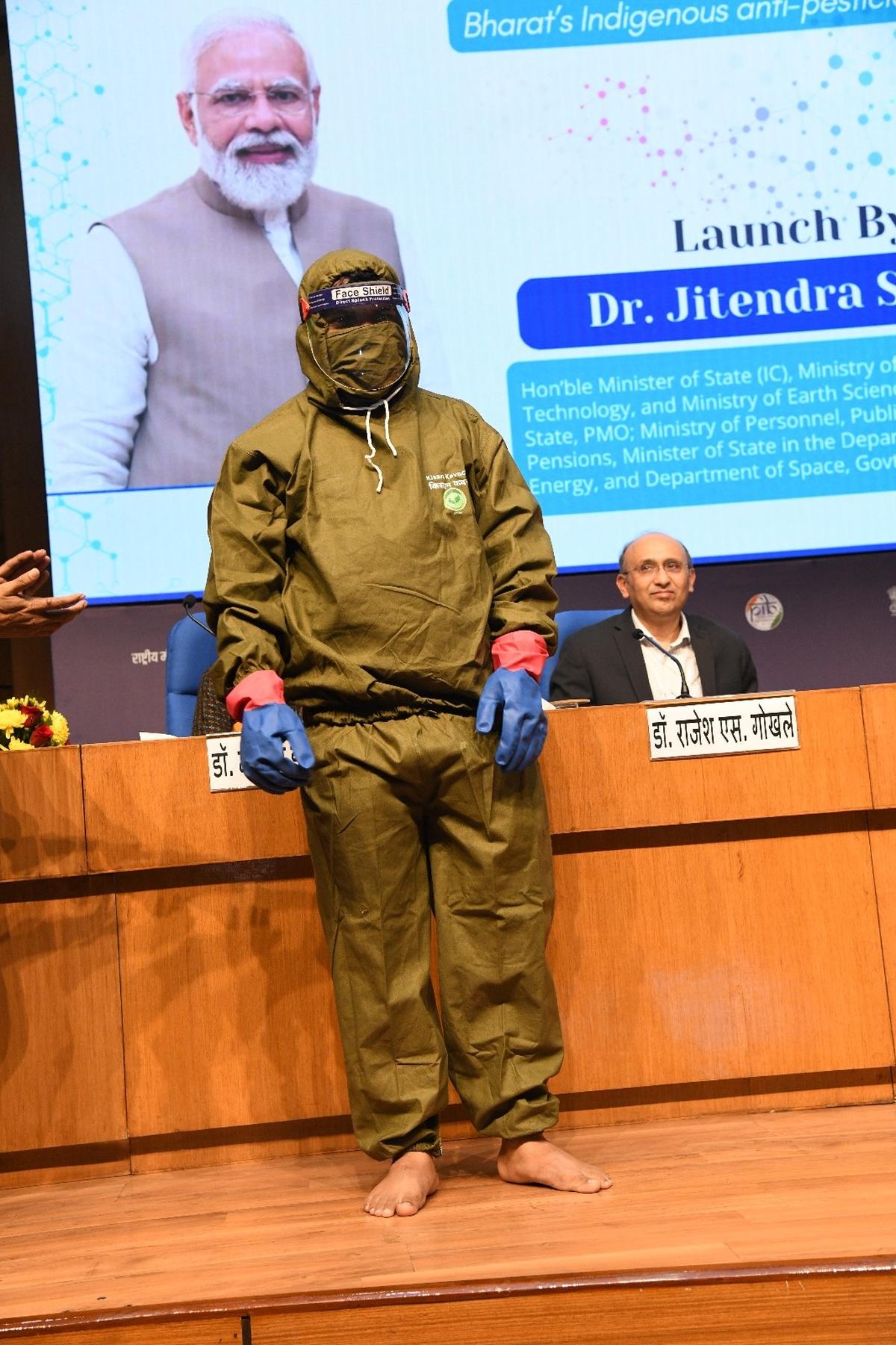
- 18 Dec 2024
In News:
Scientists develop ‘kisan kavach’ to shield farmers from pesticide sprays.
Key Highlights:
- Purpose: The Kisan Kavach is designed to shield farm labourers from harmful pesticide exposure. Pesticides, often neurotoxins, can be detrimental to health, causing symptoms like dizziness, headaches, vomiting, and even death with high exposure.
- Development:
- Developed by Biotechnology Research and Innovation Council (BRIC-inStem), Bangalore, in collaboration with Sepio Health Pvt. Ltd.
- Launched by Union Minister of State for Science and Technology.
- Fabric Technology:
- The suit uses oxime fabric, which chemically breaks down common pesticides on contact, preventing them from penetrating the skin.
- Mechanism: The fabric works through nucleophilic mediated hydrolysis, deactivating pesticides upon contact and preventing pesticide-induced toxicity and lethality.
- Components of the Kit:
- Consists of a trouser, pullover, and face-cover.
- Washable and reusable: The suit retains its protective properties even after 150 washes, in a wide temperature range, and under UV light exposure.
- Affordability:
- Priced at ?4,000 per kit, with efforts underway to reduce costs through increased production.
- Field Testing and Efficacy:
- Animal studies: Rodent tests showed that animals exposed to pesticides and covered with ordinary cotton cloth died within four days, while those with the activated fabric remained safe.
- Human trials are still pending.
- Health Implications:
- Pesticides are linked to chronic health issues, including cancer, as per studies by the National Institute of Nutrition (Indian Council of Medical Research).
- Global Context:
- In 2020, India used 61,000 tonnes of pesticides, despite producing much more (2,58,130 tonnes in 2022-2023).
- Pesticide-related health issues are a major concern, with 60% of India’s adult workforce engaged in agriculture.
- Impact:
- The suit aims to protect farm labourers from pesticide exposure and promote sustainable agriculture.
- It could help reduce health complications and improve working conditions for farmers, who often lack proper protective gear.
- Future Plans:
- Awareness campaigns will be conducted to inform farmers about this protective technology.
- Efforts are underway to make the kit more affordable as demand increases.
Credit Guarantee Scheme for e-NWR based Pledge Financing (CGS-NPF)
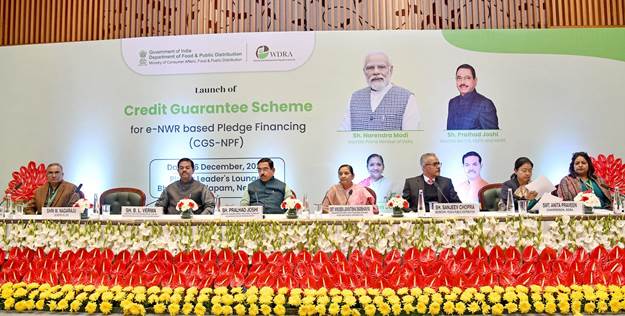
- 17 Dec 2024
In News:
The Credit Guarantee Scheme for e-NWR based Pledge Financing (CGS-NPF), launched by Union Minister Pralhad Joshi aims to support farmers by facilitating post-harvest finance using electronic negotiable warehouse receipts (e-NWRs). This initiative is part of the government’s efforts to minimize distress selling and ensure financial security for farmers, particularly small and marginalized ones.
Key Features of the Scheme:
- Total Corpus: ?1,000 crore for post-harvest finance.
- Loan Coverage:
- Agricultural purposes: Loans up to ?75 lakh.
- Non-agricultural purposes: Loans up to ?200 lakh.
- Eligible Borrowers: Small and marginal farmers, women, SC/ST/PwD farmers, MSMEs, traders, Farmer Producer Organizations (FPOs), and farmer cooperatives.
- Eligible Institutions: All scheduled and cooperative banks.
- Guarantee Coverage:
- Small and marginal farmers/Women/SC/ST/PwD: 85% for loans up to ?3 lakh, and 80% for loans between ?3 lakh to ?75 lakh.
- Other borrowers: 75% coverage for loans up to ?200 lakh.
- Risks Covered: Both credit risk and warehouseman risk.
- Guarantee Fees: 0.4% per annum for farmers, and 1% per annum for non-farmers.
Objectives:
- Minimize distress selling: By providing easy access to loans post-harvest, the scheme helps farmers avoid selling produce at low prices due to cash crunches.
- Instill confidence in banks: The scheme provides a guarantee cover to lenders, encouraging them to offer loans against e-NWRs.
- Encourage warehouse registration: The scheme emphasizes the need for more warehouses, particularly those closer to farmland, to improve accessibility for farmers.
About e-NWRs:
- e-NWRs are digital versions of traditional warehouse receipts that enable farmers to pledge stored commodities as collateral for loans.
- These receipts are governed by the Warehousing (Development and Regulation) Act of 2007, and since 2017, e-NWRs have been mandated for use in transactions related to agricultural produce stored in WDRA-accredited warehouses.
Expected Impact:
- This scheme is expected to boost post-harvest lending, with a target of increasing lending to ?5.5 lakh crore in the next decade.
- It will improve farmers’ income, reduce dependence on informal credit sources, and foster better financial inclusion.
- Additionally, it will create a more reliable supply chain for agricultural produce, enhancing food security.
Future Targets:
- Increase the number of registered warehouses under the WDRA to 40,000 in the next 1–2 years.
- Use platforms like e-Kisan Upaj Nidhi to streamline the lending process and avoid repeated visits to banks.
Atmanirbhar Clean Plant Programme
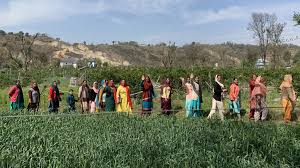
- 17 Dec 2024
In News:
Recently, the Government of India and the Asian Development Bank (ADB) signed a $98 million loan agreement to enhance horticulture crop productivity by improving plant health management. This initiative is part of India’s Atmanirbhar Clean Plant Programme (CPP), aiming to provide farmers with access to certified disease-free planting materials to improve yields, quality, and resilience, particularly against climate change impacts.
Key Highlights of the Loan Agreement
- Objective: Improve access to certified, disease-free planting materials for horticulture crops.
- Implementation: The project will be implemented by the Ministry of Agriculture and Farmers Welfare through the National Horticulture Board (NHB) and the Indian Council of Agricultural Research (ICAR).
- Focus: The initiative will enhance farmers’ productivity, resilience to climate change, and pest/disease management through the Atmanirbhar Clean Plant Programme (CPP).
About the Atmanirbhar Clean Plant Programme (CPP)
The Atmanirbhar Clean Plant Programme aims to tackle critical challenges in horticulture by ensuring farmers have access to high-quality, virus-free planting materials. The program is designed to:
- Enhance crop yields and quality.
- Promote climate-resilient varieties to help farmers adapt to rising temperatures and extreme weather events.
- Safeguard the environment by controlling plant diseases and pests proactively.
Key Components of the CPP
- Clean Plant Centers (CPCs): Establishment of nine world-class CPCs across India, equipped with advanced diagnostic labs and tissue culture facilities to maintain disease-free foundation planting materials.
- Certification Framework: A robust certification system will be introduced to ensure accountability in planting material production, including accreditation for private nurseries.
- Climate Resilience: Focus on developing and disseminating climate-resilient plant varieties, addressing the growing concerns over extreme weather events and changing pest behavior due to climate change.
Significance of the Loan Agreement
- Climate Adaptation: The project will help farmers mitigate the effects of climate change, including unpredictable weather patterns and altered pest/disease behaviors.
- Economic Impact: The initiative aligns with India's vision of self-reliance in horticulture (Atmanirbhar Bharat), boosting agricultural productivity and sustainability.
- Long-term Benefits: Improved farm productivity, sustainability, and economic well-being for farmers, especially in the face of climate change.
Global Horticulture Significance
- India’s Position: India is the second-largest producer of fruits and vegetables globally, contributing 33% to the agricultural GDP.
- Land Coverage: Horticulture occupies 18% of India’s agricultural land, yet its production surpasses that of food grains.
Implementation and Impact
- Implementation Period: The project will be executed from 2024 to 2030, with 50% financial assistance from ADB.
- Institutional Strengthening: The initiative will bolster India’s ability to manage plant health, integrating advanced diagnostic techniques and capacity-building for horticulture professionals.
KisanPehchaan Patra
- 02 Dec 2024
In News:
The Indian government is actively promoting the creation of digital identities for farmers through the KisanPehchaan Patra (Farmer ID). The initiative is an essential part of the Digital Agriculture Mission under the AgriStack initiative.
Key Details:
Objective:
- The main goal is to provide digital IDs linked to Aadhaar for farmers, capturing comprehensive agricultural data including land records, crop information, and ownership details.
- These digital identities are designed to enhance farmers' access to government schemes and digital agriculture services.
Farmer ID Creation Timeline:
- The government plans to create digital IDs for 11 crore farmers in phases:
- 6 crore farmers in FY 2024-25.
- 3 crore farmers in FY 2025-26.
- 2 crore farmers in FY 2026-27.
AgriStack Initiative:
- The AgriStack initiative aims to build a Digital Public Infrastructure (DPI) for the agriculture sector, which includes:
- Farmers' Registry.
- Geo-referenced village maps.
- Crop Sown Registry.
Implementation Strategy:
- Camp-mode approach: States have been instructed to organize field-level camps to ensure faster and inclusive registration of farmers.
- Financial Incentives:
- States will receive ?15,000 per camp for organizing these camps.
- Additionally, ?10 per Farmer ID issued.
- Funding is provided through the Pradhan Mantri KisanSamman Nidhi (PM-Kisan) scheme.
Benefits of Digital Farmer ID:
- Targeted Delivery of Benefits: Ensures subsidies and benefits reach legitimate farmers and eliminates duplication.
- Precision Agriculture: Supports data-driven policies for better crop planning, insurance, and market linkages.
- Financial Inclusion: Facilitates easy access to credit, loans, and crop insurance, empowering farmers financially.
- Better Monitoring: Helps in tracking the actual implementation of schemes and ensures that only eligible farmers benefit.
Progress in States:
- Advanced States: Gujarat, Madhya Pradesh, Maharashtra, and Uttar Pradesh have made significant progress in issuing digital Farmer IDs.
- Testing Phase: States like Assam, Chhattisgarh, and Odisha are still in the field-testing phase.
- Special Assistance Scheme: The Finance Ministry allocated ?5,000 crore in August 2024 to assist states in creating the Farmers' Registry, with funds available until March 2025.
Linkage with Land Records and Crop Data:
- The Farmer ID integrates with state land records and crop data, creating a dynamic and accurate database known as the Farmer’s Registry.
- This data helps in the development of better agricultural policies and decision-making.
Digital Agriculture Mission:
- The government approved a substantial outlay of ?2,817 crore for the Digital Agriculture Mission, which is intended to modernize agricultural practices and build robust digital infrastructure.
- The mission also includes the launch of the Digital Crop Estimation Survey (DGCES), which will help in crop estimation and better resource allocation.
Key Highlights on India’s Horticulture and Plant Health Management Initiatives
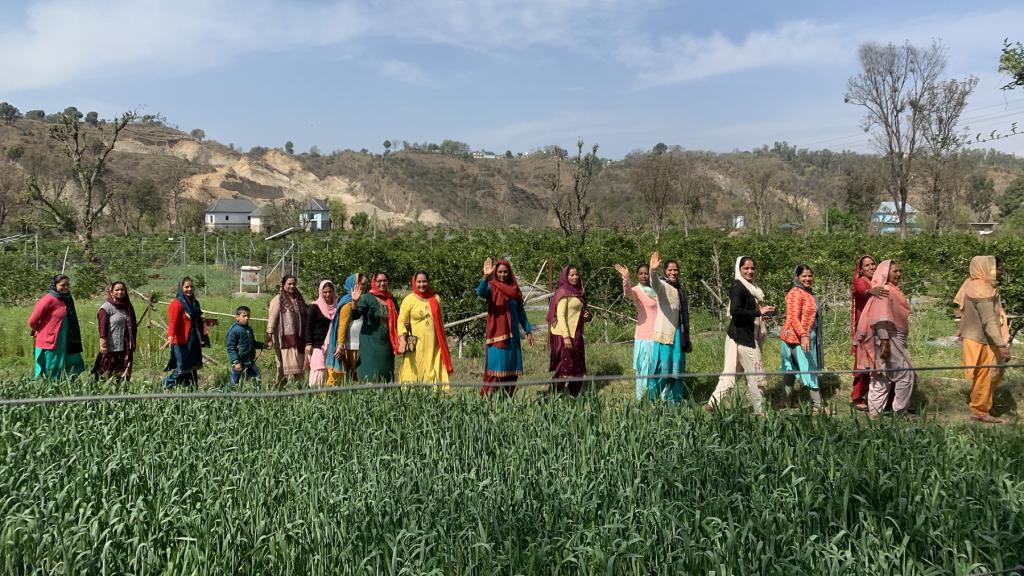
- 01 Dec 2024
In News:
Government of India and ADB sign $98 million loan to promote plant health management in India’s horticulture.
Key Highlights:
$98 Million Loan Agreement with ADB:
- India and the Asian Development Bank (ADB) signed a $98 million loan to enhance horticulture productivity and resilience.
- Objective: Improve farmers' access to certified, disease-free planting materials, which will increase crop yield, quality, and climate resilience.
- Focus Areas: The project aligns with India’s Atmanirbhar Clean Plant Programme (CPP), aiming to strengthen plant health management in horticulture.
Atmanirbhar Clean Plant Programme (CPP):
- Implemented under MIDH: The Clean Plant Programme is part of the Mission for Integrated Development of Horticulture (MIDH).
- Goal: To provide virus-free, high-quality planting materials to farmers, boosting horticultural crop yields and promoting climate-resilient varieties.
- Implementation Period: 2024-2030, with 50% financial support from ADB.
- Key Components:
- Establishment of 9 Clean Plant Centers (CPCs) with state-of-the-art diagnostic, therapeutic, and tissue culture laboratories.
- Certification Framework: Developing a regulatory framework under the Seeds Act 1966 to certify clean plants.
- Support to Nurseries: Infrastructure development for large-scale nurseries.
- Significance: The programme strengthens India's self-reliance in horticulture and enhances adaptability to climate change impacts.
Mission for Integrated Development of Horticulture (MIDH):
- Nodal Ministry: Ministry of Agriculture and Farmers Welfare.
- Focus: Holistic development of the horticulture sector, including fruits, vegetables, mushrooms, spices, and more.
- Funding Pattern:
- General States: 60% by Government of India (GoI), 40% by State Governments.
- North-Eastern and Himalayan States: 90% by GoI.
Horticulture Sector at a Glance:
- Contribution to Agricultural GDP: Accounts for 33% of the gross value.
- Land Coverage: Occupies 18% of agricultural land in India.
- Global Standing: India is the second-largest producer of fruits and vegetables globally.
- Surpassing Food Grains: Horticulture production exceeds food grain production, occupying much less land (25.66 million hectares vs. 127.6 million hectares for food grains).
Key Benefits of the CPP:
- Climate Resilience: Promotes climate-resilient plant varieties and helps farmers adapt to climate change.
- Innovation: Encourages the use of advanced testing techniques and builds institutional capacity.
- Long-term Impact: Expected to improve sustainability, productivity, and the economic well-being of farmers.
Additional Horticulture Initiatives:
- CHAMAN (Horticulture Assessment using Geo-informatics): A programme to estimate area and production of horticultural crops using scientific methods.
- Kisan Rail Services: Facilitates transportation of perishable horticultural products like fruits and vegetables.
- Capital Investment Subsidy Scheme: By the National Horticulture Board to support the sector’s growth.
13th National Seed Congress (NSC)
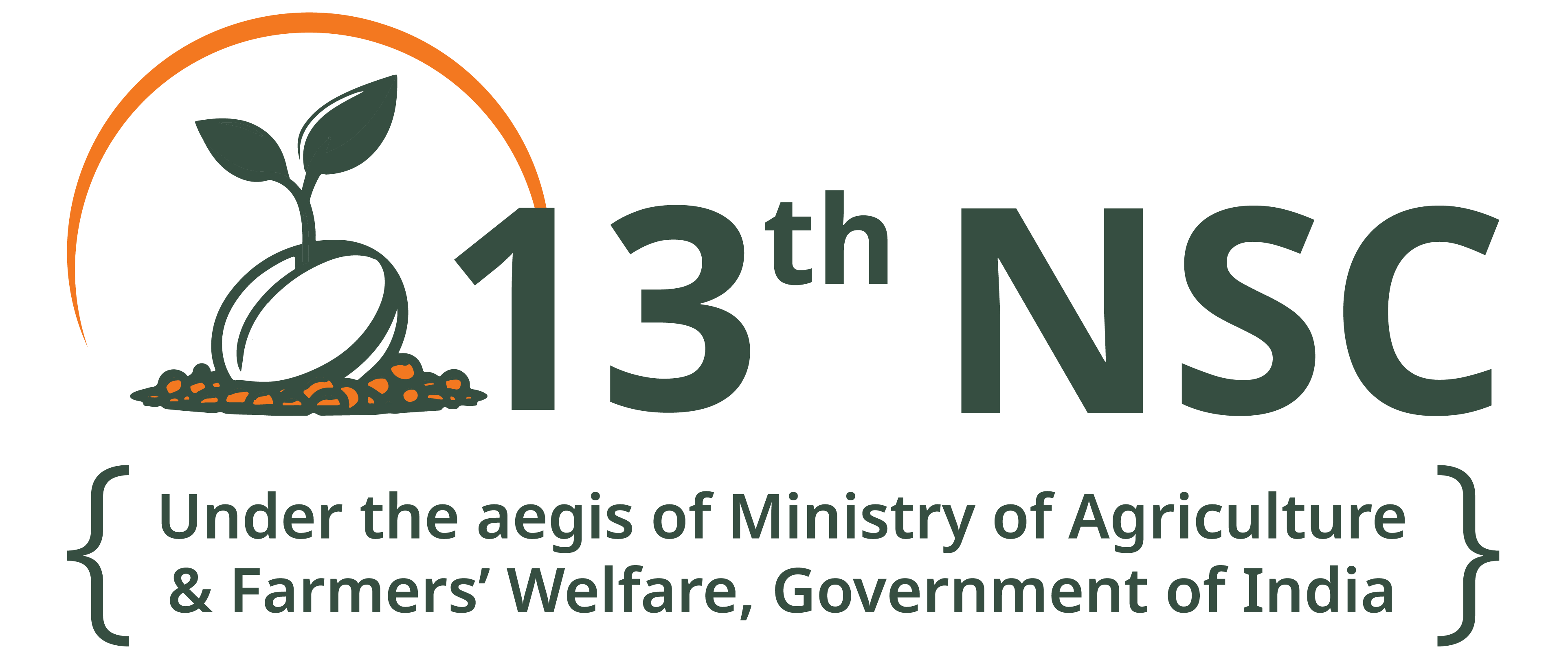
- 30 Nov 2024
In News:
- The 13th National Seed Congress (NSC), organized by the Ministry of Agriculture & Farmers' Welfare, concluded with significant discussions and outcomes focused on advancing India's seed sector.
- The theme for this year's congress, held in Varanasi, was "Innovating for a Sustainable Seed Ecosystem."
Key Highlights:
- Focus Areas:
- Seed Technologies and Biofortification: Emphasis on high-nutrition seeds like iron and zinc-enriched rice and Vitamin A-rich crops to combat malnutrition.
- Climate-Resilient Agriculture: Promoting practices like Direct Seeded Rice (DSR) and the development of stress-tolerant seed varieties to withstand climate change.
- Challenges in India’s Seed Ecosystem:
- Seed Replacement Rate (SRR): SRR in India is around 15-20%, with 100% for hybrid seeds, pointing to the need for higher adoption of certified seeds.
- Monoculture and Seed Market Monopoly: Issues like over-reliance on Bt cotton and domination by multinational companies (e.g., Bayer) in seed markets.
- Government Initiatives:
- National Seed Corporation (NSC): Produces foundation and certified seeds for over 600 varieties.
- Seed Village Programme (Beej Gram Yojana): Focus on improving the quality of farm-saved seeds.
- National Seed Reserve: Ensures seed availability during climatic disruptions.
- Policy Discussions:
- Proposed Seeds Bill: A new bill to regulate seed quality and promote sustainable practices.
- Public-Private Partnerships: Strengthening collaborations to improve seed production, accessibility, and quality.
- Outcomes:
- Biofortified Seeds: Increased development and distribution of nutrient-rich seeds.
- Climate-Resilient Seed Systems: Enhanced focus on developing crops that can withstand climate challenges.
- Public-Private Partnerships: Strengthening collaborations in seed technology and policy reform.
National Mission on Natural Farming (NMNF)
- 27 Nov 2024
In News:
The Union Cabinet approved the launching of the National Mission on Natural Farming (NMNF) as a standalone Centrally Sponsored Scheme under the Ministry of Agriculture & Farmers' Welfare.
Key Highlights
Objective & Focus:
- Launch of NMNF by the Union Cabinet to promote chemical-free farming in India.
- Aim to improve soil health, reduce input costs, and produce nutritious food.
- Support the shift to natural farming (NF), emphasizing local knowledge and agro-ecological principles.
Financial Allocation:
- Total Outlay: ?2481 crore (Government of India share ?1584 crore, State share ?897 crore) until FY 2025-26.
Key Features of NMNF:
- Coverage: Targeting 15,000 clusters in Gram Panchayats, covering 7.5 lakh hectares and impacting 1 crore farmers.
- Bio-Input Resource Centres (BRCs): 10,000 BRCs to supply ready-to-use natural farming inputs.
- Krishi Vigyan Kendras (KVKs) and Agricultural Universities (AUs): Establishment of 2,000 model demonstration farms for hands-on training in natural farming techniques.
- Farmer Training: 18.75 lakh farmers to be trained in NF practices such as preparation of organic inputs like Jeevamrit and Beejamrit.
- Krishi Sakhis/CRPs: Deployment of 30,000 workers for farmer mobilization and awareness.
Implementation Strategy:
- Farmer Certification System: Providing easy, simple certification for marketing natural farming produce with dedicated branding.
- Monitoring: Real-time, geo-tagged monitoring of implementation through an online portal.
- Convergence with other government schemes and organizations for market linkages and support.
Natural Farming Practices:
- Zero Budget Natural Farming (ZBNF): Promote sustainable farming by using local livestock and diverse crop systems.
- Benefits: Reduce dependence on external inputs like chemical fertilizers and pesticides, rejuvenate soil quality, and increase resilience to climate risks (e.g., drought, floods).
- Encourage biodiversity, and improve soil carbon content and water-use efficiency.
Targeted Areas and Farmer Support:
- Focus on areas where NF practices are already being followed or where farmer producer organizations (FPOs) or self-help groups (SHGs) are active.
- Training through model demonstration farms will focus on practical, location-specific NF techniques tailored to regional agro-ecologies.
Impact on Agriculture and Environment:
- Environmental Impact: Encourages sustainable farming by reducing chemical exposure, improving soil health, and promoting climate resilience.
- Farmer Well-being: By reducing input costs and promoting nutritious food, it aims to improve farmer incomes and family health.
- Contributing to the long-term health of the environment, ensuring a healthy Mother Earth for future generations.
Challenges and Concerns:
- Soil Nutrient Compromise: Concerns that some crops, like rice, might require chemical fertilizers (e.g., NPK) for optimal growth, which may not be sufficiently replaced by organic manure alone.
- The shift to natural farming requires significant awareness and training to ensure sustainable and productive yields.
Institutional Framework:
- Ministry of Agriculture and Farmers’ Welfare is the implementing body.
- Collaboration with KVKs, AUs, and farmer organizations ensures grassroots level support and knowledge dissemination.
Global Soil Conference 2024
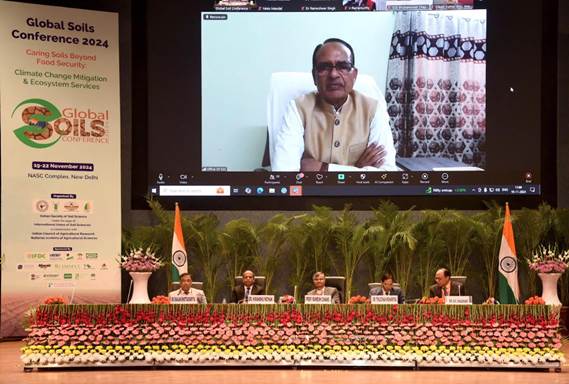
- 23 Nov 2024
In News:
- Global Soil Conference (GSC) 2024 held in New Delhi.
- Focused on soil health's importance for food security, climate change mitigation, and ecosystem services.
What is the Global Soil Conference 2024?
- Organizers: Indian Society of Soil Science (ISSS) in collaboration with the International Union of Soil Sciences (IUSS).
- Objective: Address sustainable soil/resource management challenges and foster global dialogue.
- Theme: "Caring Soils Beyond Food Security: Climate Change Mitigation & Ecosystem Services."
Key Highlights of GSC 2024:
- Soil Health Issues:
- Soil degradation threatens productivity and global food security.
- 30% of India's soil is compromised by erosion, salinity, pollution, and organic carbon loss.
- Soil erosion is linked to SDG 15 (Sustainable Development Goal 15), aiming to protect terrestrial ecosystems.
- SDG 15:
- Goals: Promote sustainable land use, combat desertification, halt land degradation, protect biodiversity.
Concerns Regarding Soil Health in India:
- Soil Degradation:One-third of India's land faces degradation due to poor farming practices.
- Soil Erosion & Fertility Loss:
- India loses 15.35 tonnes of soil/hectare annually.
- Results in crop losses, economic damage, and environmental issues like floods and droughts.
- Soil Salinity:Reduces water infiltration, nutrient uptake, and aeration, making land infertile.
- Low Organic Content:
- Organic carbon in Indian soil is 0.54%, which hampers fertility.
- Over 70% of soils are affected by acidity or alkalinity, disrupting nutrient cycles.
- Desertification:Reduces soil fertility, increases erosion, and worsens food insecurity.
- Diversion of Fertile Land:Fertile agricultural land is diverted for non-agricultural purposes.
India's Initiatives for Soil Conservation:
- Soil Health Card (SHC) Scheme:Provides farmers with soil nutrient information.
- Pradhan Mantri Krishi Sinchai Yojana:Focuses on efficient water use.
- Zero Budget Natural Farming & Natural Farming Mission:Promotes sustainable farming practices to protect soil health.
OECD Report on Indian Agricultural Policies
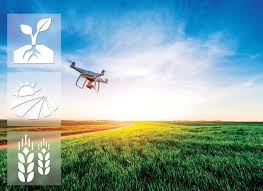
- 14 Nov 2024
In News:
- In 2023, the Organisation for Economic Co-operation and Development (OECD) revealed that Indian farmers faced the highest implicit taxation globally, amounting to USD 120 billion.
- Implicit Taxation: This taxation arises from government policies like export bans, duties, and price controls, aimed at lowering food prices for consumers but reducing the income of farmers.
- Export Restrictions: Key commodities affected include rice, sugar, onions, and de-oiled rice bran.
Impact on Indian Farmers
- Market Price Support (MPS):
- Negative MPS: In 2023, Indian agricultural policies resulted in a negative MPS of USD 110 billion.
- Farmers received lower prices than international market rates due to export bans and trade restrictions, impacting their income.
- Budgetary Support: Despite government subsidies and the Minimum Support Price (MSP) worth USD 10 billion, negative MPS outweighed positive support, leading to an overall loss for farmers.
- Farmer’s Share in Global Negative Support:
- India’s share of global negative price support in 2023 was 62.5%, a significant increase from 61% in 2000-02.
Global Agricultural Policy Trends
- Global Support: Total support for agriculture across 54 countries averaged USD 842 billion annually (2021-2023). However, there was a decline in support in 2022-23 from the pandemic-era peak.
- Challenges:
- Geopolitical Tensions (e.g., Russia-Ukraine war) and climate change are exacerbating global agricultural production and trade.
- Export Restrictions in various countries are distorting international agricultural markets.
- Farmer Protests across countries reflect the economic and social struggles of the farming community.
- Sustainability Issues: Global agricultural productivity growth is slowing, posing challenges to feeding a growing population sustainably.
India's Agricultural Policies
- Export Bans and Restrictions: These policies are intended to control domestic prices but undermine farmers’ income by lowering market prices for key agricultural products.
- Minimum Support Price (MSP): MSP is meant to protect farmers, but is often set below international market rates, leading to a negative price effect.
- Regulatory Constraints: Policies like the Essential Commodities Act (1955) and APMC Act (2003), though aimed at ensuring food security, often lead to price suppression for farmers.
- Price Depressing Policies: India's agricultural policies result in lower farm-gate prices due to price controls, government-set procurement prices, and lack of market access.
Negative Market Price Support (MPS)
- Historical Trends:
- From 2014-2016, India’s Producer Support Estimate (PSE) was -6.2%, driven mainly by negative MPS (-13.1%).
- The PSE measures the annual value of transfers to farmers, both from consumers and the government.
- Inefficiencies:
- Infrastructure Gaps: Poor infrastructure and high transaction costs lower the prices farmers receive.
- Inefficient Resource Allocation: Short-term subsidies for inputs (fertilizers, irrigation) don’t address long-term agricultural challenges like climate change and market access.
Government Support Programs
- Subsidies and Schemes:
- National Mission on Sustainable Agriculture (NMSA)
- Paramparagat Krishi Vikas Yojana (PKVY) for organic farming.
- Rashtriya Krishi Vikas Yojana (RKVY) to promote agricultural development.
- Digital Agriculture Mission and Unified Farmer Service Platform (UFSP) for modernizing agricultural practices.
- Sustainability Efforts:
- The government has introduced initiatives like AgriStack and Mission Organic Value Chain Development in the North East to enhance sustainable agricultural practices and reduce the negative impacts on farmers.
Global Context and Recommendations
- Environmental Public Goods Payments (EPGP): Only 0.3% of total producer support is dedicated to environmental sustainability, despite the growing need for climate-resilient agriculture.
- Sustainable Agricultural Practices: The OECD advocates for governments to tie producer support to sustainable farming practices, including the use of metrics like Total Factor Productivity (TFP) and Agri-Environmental Indicators (AEIs).
- TFP measures agricultural efficiency, while AEIs assess the environmental impacts of farming.
OECD Overview
- OECD Function: Founded in 1961, the OECD is an international organization of 38 countries that promotes prosperity, equality, and well-being through economic reports, data, and policy analysis.
- India’s Role: India has been an OECD Key Partner since 2007, engaging with the OECD on various policy issues, though it is not a member.
Nano-Coating Technology for Fertilizer Efficiency

- 12 Nov 2024
In News:
A mechanically stable, biodegradable, hydrophobic nanocoating material can enhance the nutrient use efficiency of chemical fertilizers by tuning them for slow release, thereby limiting their interaction with the rhizosphere soil, water and microbes.
Development of Slow-Release Fertilizers:
- A biodegradable, hydrophobic nanocoating has been developed to enhance the nutrient use efficiency of chemical fertilizers.
- The nanocoating allows for slow release of nutrients, thus limiting excessive interaction with soil, water, and microbes, and optimizing fertilizer usage.
Coating Composition:
- The coating is made from nanoclay-reinforced binary carbohydrates, primarily chitosan (a biopolymer from chitin) and lignin (a plant-based polymer).
- These materials are low-cost, naturally derived, and eco-friendly, ensuring sustainability and reducing the environmental impact of fertilizer use.
Technological Innovation:
- The coating process involves using a drum rotor method to uniformly coat fertilizers, improving their efficiency.
- The tuning of hydrophobicity in the nanocoating alters the release kinetics of fertilizers, ensuring that nutrients are released in accordance with the crop’s nutrient uptake needs.
Sustainability and Biodegradability:
- The nanocoating is biodegradable, which ensures that it does not harm the environment post-application, unlike conventional chemical fertilizers that may lead to soil degradation and water pollution.
- Life cycle assessment confirms the product's long-term sustainability compared to traditional fertilizers.
Enhanced Crop Productivity:
- The slow-release coating enables a reduced fertilizer dose, while maintaining or even increasing crop yields, particularly for staple crops like rice and wheat.
- This technology facilitates higher agricultural output with fewer inputs, contributing to food security.
Industrial Viability:
- The mechanical stability of the coated fertilizers ensures they can withstand transportation and handling, making them suitable for large-scale industrial application.
- The rotary drum system used for coating ensures uniform application and superior mechanical performance, ensuring that the fertilizers are not damaged during the supply chain process.
Economic Benefits:
- The use of slow-release fertilizers can reduce overall fertilizer costs for farmers while enhancing yields, leading to improved socio-economic conditions for farmers.
- The technology holds potential for economic growth by boosting agricultural productivity and reducing the financial burden on farmers for chemical fertilizer inputs.
Global Relevance:
- The research is significant in the context of global sustainable development goals, aiming to reduce the over-reliance on conventional chemical fertilizers that contribute to soil degradation, water contamination, and greenhouse gas emissions.
Research Collaboration:
- This breakthrough was achieved by scientists from the Institute of Nano Science and Technology (INST), Mohali, in collaboration with the Department of Science and Technology (DST).
- The findings were published in the peer-reviewed journal Environmental Science: Nano, highlighting its scientific validation.
State of Food and Agriculture 2024Report
- 12 Nov 2024
In News:
- India's annual hidden costs from agrifood systems total $1.3 trillion, the third-largest globally, after China ($1.8 trillion) and the US ($1.4 trillion).
- These costs are mainly driven by unhealthy dietary patterns leading to non-communicable diseases (NCDs), such as heart disease, diabetes, and stroke.
Major Contributors to Hidden Costs:
- Unhealthy Diets: Over 73% of India’s hidden costs stem from unhealthy dietary habits, including:
- Excessive consumption of processed foods and additives ($128 billion).
- Low intake of plant-based foods, fruits, and beneficial fatty acids ($846 billion).
- These dietary risks contribute to a significant health burden, increasing the prevalence of NCDs and reducing labor productivity.
Global Context:
- Global hidden costs of agrifood systems amount to $12 trillion annually.
- 70% of these costs (~$8.1 trillion) arise from unhealthy dietary patterns, which include high intakes of sugar, salt, and processed foods, contributing to diseases and economic losses.
Health Impacts:
- The report identifies 13 dietary risk factors that contribute to NCDs, including insufficient intake of whole grains, fruits, vegetables, and excessive sodium, with varying effects across different agrifood systems.
Environmental and Social Costs:
- Environmental Costs: High costs from unsustainable agricultural practices, including greenhouse gas emissions and nitrogen runoff. In some agrifood systems, environmental costs can reach up to 20% of GDP.
- Social Costs: High poverty rates among agrifood workers and undernourishment in systems like protracted crises and traditional agrifood systems contribute significantly to the hidden costs.
India’s Agrifood System Profile:
- India’s agrifood system faces significant challenges related to low wages, poor productivity, and poverty among agrifood workers, driven by distributional failures.
- Climate Change and Environmental Degradation: Issues like droughts, floods, and soil degradation threaten food security and agricultural sustainability in India.
Recommendations for Transformative Change:
- True Cost Accounting: Implementing this method can help better capture hidden costs and enable more informed decision-making for a sustainable agrifood system.
- Healthier Diets: Policies to make nutritious food more affordable and accessible to reduce health-related hidden costs.
- Sustainability Incentives: Encouraging practices that reduce greenhouse gas emissions, harmful land-use changes, and biodiversity loss, using labelling, certification, and industry standards.
- Consumer Empowerment: Providing accessible information about the environmental, social, and health impacts of food choices, ensuring even vulnerable households benefit from healthier options.
India’s Path Forward:
- India has several ongoing initiatives for sustainable agriculture, including:
- National Mission for Sustainable Agriculture (NMSA).
- Eat Right Initiative.
- Digital Agriculture Mission (DAM).
- However, challenges like climate change, soil degradation, and low productivity among smallholder farmers hinder progress toward sustainable food systems.
Key Focus Areas for India’s Agrifood Systems:
- Support for Smallholder Farmers: Enhancing access to technology, markets, and financial services for marginalized farmers.
- Sustainable Practices: Adoption of water-efficient practices, soil health restoration, and environmentally friendly farming methods.
- Collaboration with International Agencies: Cooperation with FAO, WFP, and others to strengthen agricultural reforms and support smallholder farmers.
NAMO DRONE DIDI
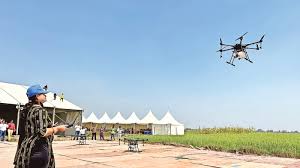
- 05 Nov 2024
In News:
Department of Agriculture & Farmers’ Welfare has released the Operational Guidelines of Central Sector Scheme “NAMO DRONE DIDI”
Key Highlights:
Objective:
- Empower women through Self-Help Groups (SHGs) by providing drones for agricultural rental services.
- Aim to support 14,500 SHGs from 2024 to 2026.
Scheme Overview:
- Type: Central Sector Scheme, under the Deendayal Antyodaya Yojana – National Rural Livelihood Mission (DAY-NRLM).
- Ministry: Ministry of Agriculture & Farmers Welfare.
- Target: Women SHGs for providing drone services in agriculture (e.g., nutrient and pesticide spraying).
Key Features:
- Financial Assistance:
- 80% subsidy (up to ?8 lakh) for SHGs to purchase drones.
- Loans for the remaining 20% via the National Agriculture Infra Financing Facility (AIF) with 3% interest subvention.
- Drone Package:
- Includes drones, spray assemblies, batteries, cameras, chargers, and measurement tools.
- Additional batteries and propellers allow up to 20 acres of coverage per day.
- Training Program:
- One SHG member will be selected for 15 days of mandatory training.
- Focus on drone operation and agricultural tasks (nutrient and pesticide spraying).
- Implementation & Oversight:
- Central Governance: Empowered Committee comprising secretaries from key ministries (Agriculture, Rural Development, Fertilizers, Civil Aviation, and Women and Child Development).
- State Level: Lead Fertilizer Companies (LFCs) will implement the scheme in coordination with state departments and SHG federations.
- Monitoring: IT-based Management Information System (MIS) through the Drone Portal for real-time tracking and fund disbursement.
- Financial Flexibility:
- SHGs can access loans through other Ministry of Rural Development schemes if needed.
Implementation Details:
- Governance: Central level oversight by the Empowered Committee and state-level execution by Lead Fertilizer Companies (LFCs).
- Ownership: Drones procured by LFCs will be owned by SHGs or their Cluster Level Federations (CLFs).
- Monitoring: The scheme will be tracked and managed through the Drone Portal, ensuring transparency and accountability.
Mission for Integrated Development of Horticulture (MIDH)
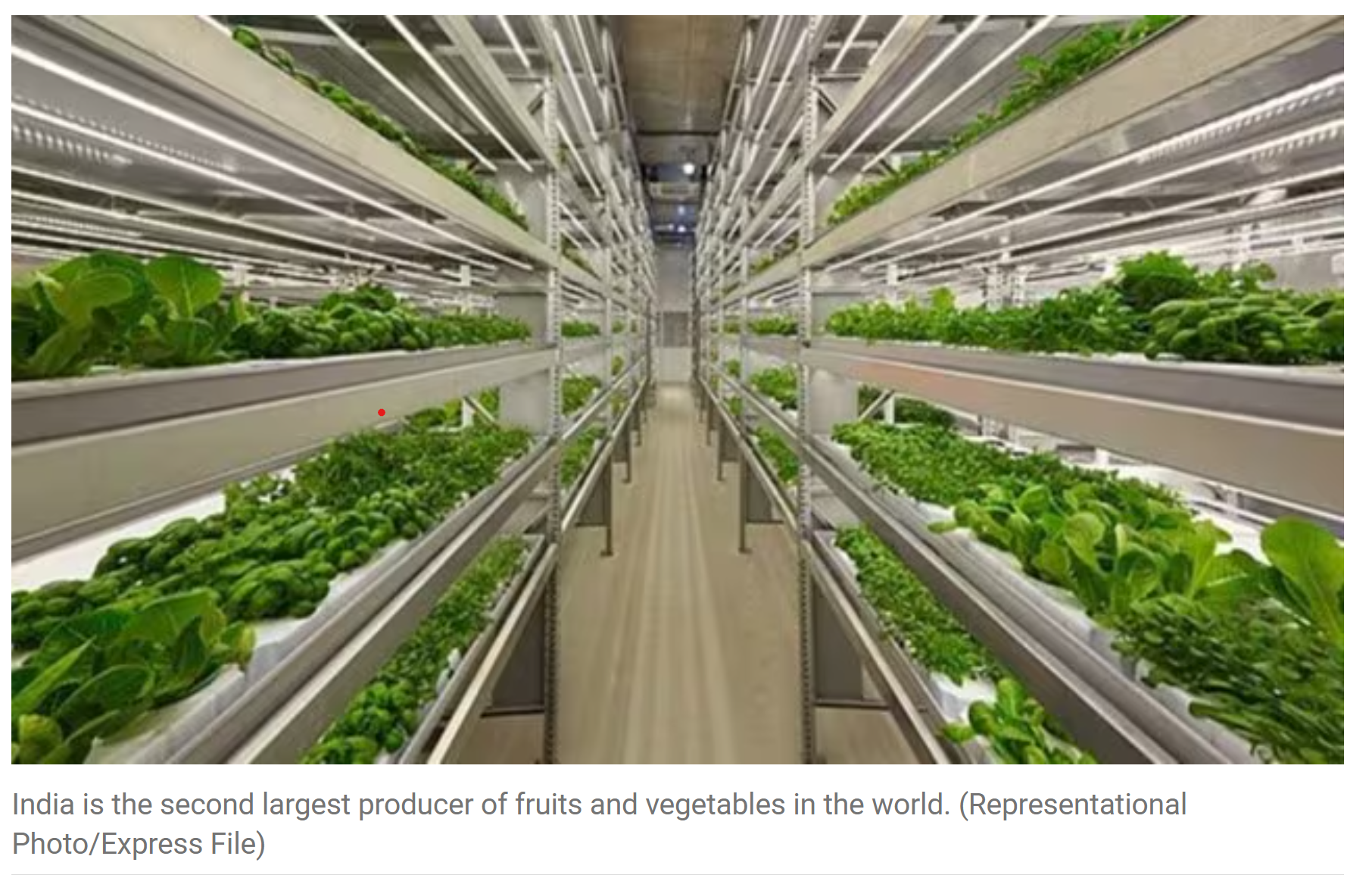
- 29 Oct 2024
In News:
- The Union Government has decided to introduce four new components under the Mission for Integrated Development of Horticulture (MIDH), aimed at promoting modern farming techniques:Hydroponics, Aquaponics, Vertical Farming&Precision Agriculture
Key Features of MIDH:
- MIDH is a Central Sponsored Scheme (CSS) aimed at the integrated development of various horticulture crops, including:
- Fruits, vegetables, root and tuber crops, mushrooms, spices, flowers, aromatic plants, coconut, cashew, cocoa, and bamboo.
- The scheme focuses on pre-production, production, post-harvest management, processing, and marketing activities.
Revision of Operational Guidelines and Cost Norms:
- The Ministry of Agriculture and Farmers' Welfare is revising the MIDH operational guidelines and cost norms, which were last updated in April 2014.
- The revised guidelines are expected to be released within one month.
- Cost norms are likely to increase by 20% compared to the existing rates, addressing concerns from various states about outdated guidelines.
Reason for Revision:
- Several states, including Odisha, have raised concerns over the old rates under MIDH. For example, Odisha’s Agriculture Minister highlighted that the state was still using 10-year-old rates.
- The Union Cabinet had already approved the rationalization of all CSS operating under the Ministry into two umbrella schemes:
- Pradhan Mantri Rashtriya Krishi Vikas Yojana (PM-RKVY)
- Krishonnati Yojana (KY)
Growth in India's Horticulture Sector:
- India’s horticulture production has significantly increased in recent years:
- Total production reached 334.60 million metric tonnes in 2020-21, up from 240.53 million metric tonnes in 2010-11.
- India is now the second largest producer of fruits and vegetables globally, surpassing food grain production.
- MIDH Annual Budget:The annual allocation for MIDH in the current financial year (2024-25) is ?2,000 crore.
National Workshop on SATHI Portal
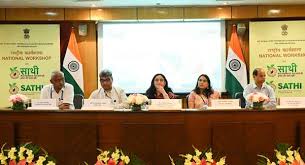
- 25 Oct 2024
In News:
Recently, the Department of Agriculture & Farmers' Welfare (DA&FW) organised a National Workshop on the SATHI (Seed Authentication, Traceability, and Holistic Inventory) Portal in New Delhi.
Key Highlights:
Purpose & Focus
- SATHI Portal: Focuses on Seed Authentication, Traceability, and Holistic Inventory to enhance seed certification, improve seed traceability, and streamline the seed supply chain.
- Primary Objective: Ensure availability of high-quality seeds to farmers through a transparent and efficient seed management system.
Key Features of the SATHI Portal
- Seed Certification: Aims to streamline seed certification processes across states for faster and more accurate seed certifications.
- Seed Traceability: Enhances transparency and traceability of seeds to ensure quality and authenticity.
- Inventory Management: The portal facilitates seed inventory management, helping farmers and stakeholders access reliable and transparent seed information.
- Technological Integration: Developed by the National Informatics Centre (NIC), the portal incorporates technology-driven solutions to minimize transactional time for registrations, approvals, and certifications.
Phase-II Rollout
- Focus on seed inventory management, with the objective of offering farmers reliable access to certified seed varieties.
- It aims to integrate state-specific seed processes into the national framework for greater standardization and efficiency.
Workshops & Technical Sessions
- NIC and ICAR Presentations: Covered the core components of the SATHI Portal, including:
- Seed Law Enforcement
- DNA Fingerprinting for ensuring seed authenticity.
- Seed Laboratory Processes to uphold quality control.
- Review of Phase-I: Discussions on achievements of Phase-I, focusing on improvements in seed certification processes across states.
- State Experiences: 10 state representatives shared insights on their experiences with the portal, discussing both benefits and challenges in the implementation phase.
Role of NIC & Technology
- The National Informatics Centre (NIC) is the technology partner behind the SATHI Portal, which is designed to enhance the efficiency of seed certification and inventory management.
- The portal contributes to larger digital initiatives like the Digital Agriculture Mission and Unified Farmer Service Platform (UFSP), which aim to support agricultural development through technology.
Hand-in-Hand Investment Forum
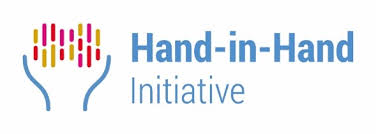
- 18 Oct 2024
In News:
Recently, the Director-General of the Food and Agriculture Organization (FAO) inaugurated the third Hand-in-Hand Investment Forum.
Purpose and Goals
- Objective: To accelerate the transformation of agrifood systems to address global challenges:
- Eradicate poverty (SDG 1)
- End hunger and malnutrition (SDG 2)
- Reduce inequalities (SDG 10)
- Target: Focuses on improving the lives of poor and vulnerable populations by:
- Raising incomes
- Enhancing nutritional status and overall well-being
- Strengthening resilience to climate change
Key Features of the HIH Initiative
- Launched: 2019 as a flagship program by the Food and Agriculture Organization (FAO).
- Primary Focus Areas:
- Geospatial and analytics-driven approach: Utilizes advanced geospatial modeling, biophysical, socio-economic data, and analytics to identify key territories for intervention.
- Market-based transformation: Aims to create sustainable, market-based solutions for agricultural development and food systems transformation.
- Value Chain Development: Focus on developing value chains for priority commodities to boost incomes and food security.
- Agro-Industry Building: Strengthening agro-industries and introducing efficient water management and precision agriculture systems.
- Digitalization: Introducing digital services for better agricultural planning and productivity.
Key Areas of Intervention
- Agricultural Transformation: Identifying territories with the highest potential for transformation.
- Sustainable Management: Focus on sustainable practices in forestry, fisheries, and land management.
- Climate Resilience: Building systems to mitigate the effects of climate change and reduce vulnerability.
- Food Loss Reduction: Addressing food losses and waste across agricultural value chains.
Global Participation
- Member Countries: 72 countries have joined the initiative, collaborating on shared goals for agrifood systems transformation.
The Hand-in-Hand Investment Forum
- Purpose: A platform to mobilize investments for the successful implementation of agrifood transformation programs under the HIH initiative.
- Event: The third Hand-in-Hand Investment Forum was recently opened by the FAO Director-General to discuss challenges and solutions for global agrifood system transformation.
About the Food and Agriculture Organization (FAO)
- Established: October 1945, it is the oldest permanent specialized agency of the United Nations.
- Mandate:
- Improve nutrition.
- Increase agricultural productivity.
- Raise the standard of living in rural areas.
- Contribute to global economic growth.
- Headquarters: Rome, Italy.
- Members: 194 Member States and the European Union.
Key Role of FAO:
- FAO leads international efforts to combat hunger and malnutrition worldwide.
- Supports member countries in implementing agricultural and food security programs.
Strategic Importance
- The Hand-in-Hand Initiative is integral to FAO’s mandate, focusing on countries with the most pressing needs due to poverty, hunger, or crises (natural or man-made).
- It enhances cooperation among nations to tackle global food security challenges, with a particular emphasis on countries with limited national capacities.
7 New Schemes to Boost Farmer Income
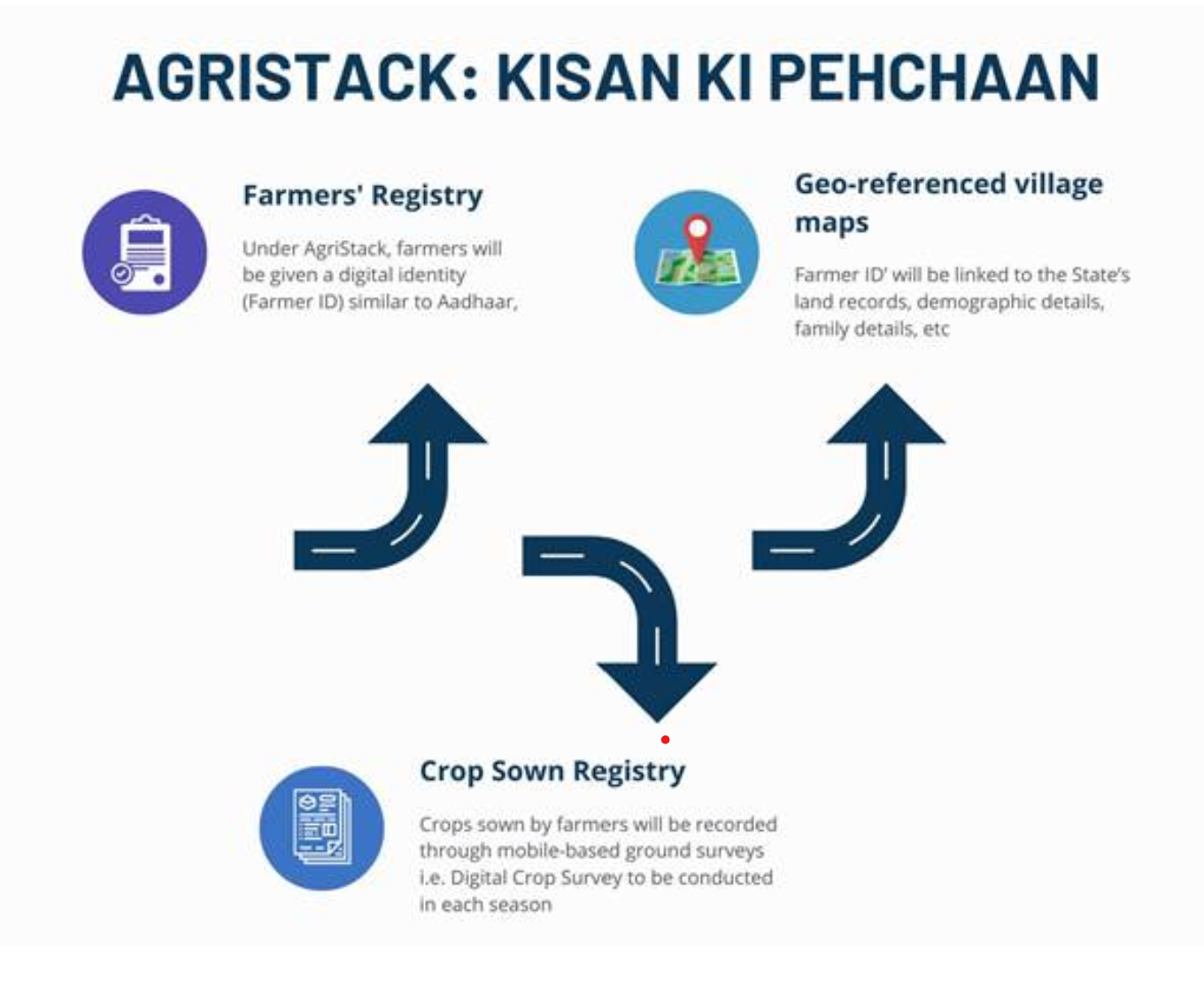
- 03 Sep 2024
In News:
The Union Cabinet chaired by Prime Minister, Shri Narendra Modi, approved seven schemes to improve farmers’ lives and increase their incomes at a total outlay of Rs 14,235.30 Crore.
1. Digital Agriculture Mission: based on the structure of Digital Public Infrastructure, Digital Agriculture Mission will use technology for improving farmers’ lives. The Mission has a total outlay of Rs 2,817 crores. It comprises two foundational pillars
1. Agri Stack
- Farmers registry
- Village land maps registry
- Crop Sown Registry
2. Krishi Decision Support System
- Geospatial data
- Drought/flood monitoring
- Weather/satellite data
- Groundwater/water availability data
- Modelling for crop yield and insurance
The Mission has provision for
- Soil profile
- Digital crop estimation
- Digital yield modelling
- Connect for crop loan
- Modern technologies like AI and Big Data
- Connect with buyers
- Bring new knowledge on mobile phones
2. Crop science for food and nutritional security: with a total outlay of Rs 3,979 crore. The initiative will prepare farmers for climate resilience and provide for food security by 2047. It has following pillars:
- Research and education
- Plant genetic resource management
- Genetic improvement for food and fodder crop
- Pulse and oilseed crop improvement
- Improvement of commercial crops
- Research on insects, microbes, pollinators etc.
3. Strengthening Agricultural Education, Management and Social Sciences: with a total outlay of Rs 2,291 Crore the measure will prepare agriculture students and researchers for current challenges and comprises the following
- Under Indian Council of Agri Research
- Modernising agri research and education
- In line with New Education Policy 2020
- Use latest technology … Digital DPI, AI, big data, remote, etc
- Include natural farming and climate resilience
4. Sustainable livestock health and production: with a total outlay of Rs 1,702 crore, the decision aims to Increase farmers income from livestock and dairy. It comprises the following
- Animal health management and veterinary education
- Dairy production and technology development
- Animal genetic resource management, production and improvement
- Animal nutrition and small ruminant production and development
5. Sustainable development of Horticulture: with a total outlay of Rs 1129.30 crore the measure is aimed at increasing farmers’ income from horticulture plants. It comprises the following
- Tropical, sub-tropical and temperate horticulture crops
- Root, tuber, bulbous and arid crops
- Vegetable, floriculture, and mushroom crops
- Plantation, spices, medicinal, and aromatic plants
6. Strengthening of Krishi Vigyan Kendra with an outlay of Rs 1,202 crore
7. Natural Resource Management with an outlay of Rs 1,115 crore
Digital Agriculture Mission
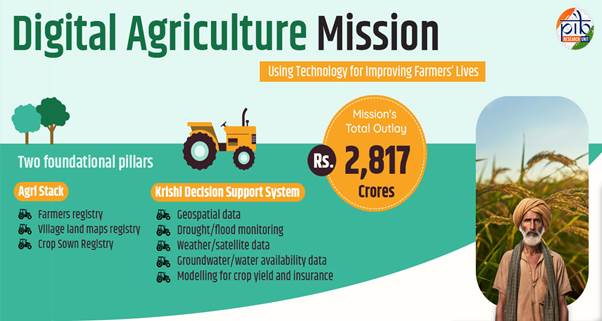
- 03 Sep 2024
Introduction
India's digital revolution has significantly transformed governance and service delivery in recent years by creating digital identities, secured payments and transactions. This progress has paved the way for a thriving digital ecosystem across various sectors, including finance, healthcare, education, and retail, positioning India as a leader in citizen-centric digital solutions.
For a similar transformation of the Agriculture Sector, the Union Cabinet Committee, chaired by Prime Minister Narendra Modi approved the 'Digital Agriculture Mission' with a substantial financial outlay of Rs. 2,817 Crore, including a central government share of Rs. 1,940 Crore, on September 2, 2024.
The Digital Agriculture Mission is designed as an umbrella scheme to support various digital agriculture initiatives. These include creating Digital Public Infrastructure (DPI), implementing the Digital General Crop Estimation Survey (DGCES), and supporting IT initiatives by the Central Government, State Governments, and Academic and Research Institutions.
The scheme is built on two foundational pillars:
- Agri Stack
- Krishi Decision Support System.
Additionally, the mission includes ‘Soil Profile Mapping’ and aims to enable farmer-centric digital services to provide timely and reliable information for the agriculture sector.
AgriStack: Kisan ki Pehchaan
AgriStack is designed as a farmer-centric Digital Public Infrastructure (DPI) to streamline services and scheme delivery to farmers. It comprises three key components:
1. Farmers' Registry
2. Geo-referenced village maps
3. Crop Sown Registry
- A crucial feature of AgriStack is the introduction of a 'Farmer ID', similar to Aadhaar card, serving as a trusted digital identity for farmers.
- These IDs, created and maintained by the State Governments/ Union Territories, will be linked to various farmer-related data, including land records, livestock ownership, crops sown, and benefits availed.
- The implementation of AgriStack is progressing through partnerships between the Central and State Governments, with 19 states having signed MoUs with the Ministry of Agriculture. Pilot projects have been conducted in six states to test the creation of Farmer IDs and the Digital Crop Survey.
- The six states include Uttar Pradesh (Farrukhabad), Gujarat (Gandhinagar), Maharashtra (Beed), Haryana (Yamuna Nagar), Punjab (Fatehgarh Sahib), and Tamil Nadu (Virudhnagar).
Key targets include:
- Creating digital identities for 11 crore farmers over three years (6 crore in FY 2024-25, 3 crore in FY 2025-26, and 2 crore in FY 2026-27)
- Launching the Digital Crop Survey nationwide within two years, covering 400 districts in FY 2024-25 and all districts in FY 2025-26
2. Krishi Decision Support System
- The Krishi Decision Support System (DSS) will integrate remote sensing data on crops, soil, weather, and water resources into a comprehensive geospatial system.
3. Soil Profile Mapping
Under the mission, detailed soil profile maps on a 1:10,000 scale for approximately 142 million hectares of agricultural land have been envisaged, with 29 million hectares of soil profile inventory already being mapped.
- Further under the Digital Agriculture Mission, the Digital General Crop Estimation Survey (DGCES) will be used for crop-cutting experiments to provide precise yield estimates, enhancing agricultural production accuracy.
- The mission is expected to create direct and indirect employment in agriculture, providing opportunities for around 2,50,000 trained local youth and Krishi Sakhis.
- By leveraging modern technologies like data analytics, AI, and remote sensing, the mission will improve service delivery for farmers, including streamlined access to government schemes, crop loans, and real-time advisories.
Key Components of the Mission
The Digital Agriculture Mission focuses on grassroots implementation, targeting farmers as the primary beneficiaries. Some of the key benefits of the mission include:
- Digital authentication for accessing services and benefits, reducing paperwork and the need for physical visits.
- Enhanced efficiency and transparency in government schemes, crop insurance, and loan systems through accurate data on crop area and yield.
- Crop map generation and monitoring for better disaster response and insurance claims.
- Development of digital infrastructure to optimize value chains and provide tailored advisory services for crop planning, health, pest management, and irrigation.
Digital Public Infrastructure for Agriculture
- Union Finance Minister Nirmala Sitharaman announced in the Union Budget 2024-25 that the Government, in partnership with states, will implement Digital Public Infrastructure (DPI) for agriculture over the next three years.
- This initiative will cover farmers and their lands, with a digital crop survey for Kharif planned for 400 districts this year. The goal is to update registries with details of 6 crore farmers and their lands.
- The Union Budget 2023-24 had previously introduced the DPI for agriculture, which aims to provide comprehensive data on farmers, including demographic details, land holdings, and crops sown. The DPI will integrate with state and central digital infrastructures to offer a range of farmer-centric services, including information on livestock, fisheries, soil health, and available benefits.
Conclusion
- The Union Cabinet also approved six major schemes alongside the Digital Agriculture Mission, with a total outlay of Rs 14,235.30 crore.
- These initiatives include Rs 3,979 crore for Crop Science aimed at ensuring food security and climate resilience by 2047, and Rs 2,291 crore for strengthening Agricultural Education, Management, and Social Sciences to support students and researchers. Rs 1,702 crore is allocated for Sustainable Livestock Health and Production to boost incomes from livestock and dairy, while Rs 1,129.30 crore is designated for Sustainable Development of Horticulture to increase income from horticulture. Additionally, Rs 1,202 crore will be invested in strengthening Krishi Vigyan Kendra, and Rs 1,115 crore towards Natural Resource Management.
- These comprehensive approaches leverage digital technologies to enhance productivity, efficiency, and sustainability in India's agricultural sector, potentially transforming the lives of millions of farmers across the country. By extending the digital revolution to agriculture, India aims to further solidify its position as a global leader in innovative, technology-driven solutions for critical sectors of the economy.
SPICED SCHEME
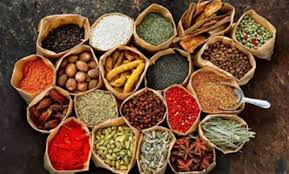
- 25 Sep 2024
In the News
The Union Ministry of Commerce and Industry has authorized the SPICED scheme (Sustainability in Spice Sector through Progressive, Innovative, and Collaborative Interventions for Export Development), which will run until 2025-26.
Overview
This initiative aims to expand the cultivation area and enhance the productivity of both small and large cardamom. It will also focus on improving the quality of spices for export through advancements in post-harvest processes and promoting value-added spice exports.
Key Objectives:
- Increase cardamom production and boost export potential.
- Improve post-harvest quality to meet export standards and ensure compliance with safety and quality regulations.
India holds the position of the largest producer, consumer, and exporter of spices globally.
Cardamom
Cardamom is sourced from the seeds of the Elettaria cardamomum plant (commonly known as green or true cardamom) and is a member of the ginger family. It is known for its unique, robust flavor that combines both spicy and sweet notes. There are two primary varieties: Small Cardamom and Large Cardamom.
Small Cardamom:
- Origin: Native to the evergreen forests of South India's Western Ghats.
- Major Producers: Primarily grown in Kerala, Karnataka, and Tamil Nadu.
- Growing Conditions: Thrives in loamy soil with thick shade, requires temperatures between 10°C and 35°C, and needs 1500 to 4000 mm of annual rainfall.
Large Cardamom:
- Distribution: Mainly cultivated in the Sub-Himalayan regions of Northeast India, Nepal, and Bhutan.
- Major Producers: Key production areas include Sikkim, Arunachal Pradesh, and the Darjeeling district of West Bengal.
- Growing Conditions: Prefers high altitudes (600 to 2000 meters), with average rainfall of 3000-3500 mm, and temperatures ranging from 6°C to 30°C. Well-drained, loamy soils rich in organic matter are ideal.
About the Spices Board of India
Established in 1987 under the Ministry of Commerce and Industry, the Spices Board of India serves as the apex organization for the promotion and export of a diverse array of spices, including black pepper, both small and large cardamom, ginger, turmeric, cinnamon, cumin, and fenugreek. The Board was formed by merging the Cardamom Board (1968) and the Spices Export Promotion Council (1960). Its headquarters is located in Kochi, Kerala.
100 YEARS OF ICAR-NISA
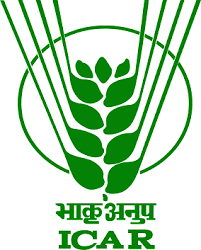
- 23 Sep 2024
Overview:
The ICAR-National Institute of Secondary Agriculture (NISA), originally established in 1924 as the Indian Institute of Natural Resins and Gums in Ranchi, Jharkhand, marks its centenary this year. Renamed in 2022, it operates under the Ministry of Agriculture and Farmers’ Welfare, focusing on enhancing the value of agricultural products.
Understanding Secondary Agriculture:
Secondary agriculture encompasses the transformation of primary agricultural products into higher-value commodities and includes activities such as:
- Beekeeping
- Poultry farming
- Agricultural tourism
This sector plays a crucial role in converting agricultural produce, residues, and by-products into valuable goods for various uses, including pharmaceuticals, food, and industrial applications. Examples of secondary agriculture practices include:
- Extracting vitamins from grains
- Producing oil from rice bran
- Making jaggery from sugarcane
- Cottage industries for jams and pickles
Growth Potential: The sector is poised for growth due to:
- Increasing consumer demand for value-added products like ready-to-eat meals.
- The need for innovative uses of renewable agro-bio resources.
- The significant availability of agricultural byproducts.
Significance of Secondary Agriculture:
- Environmental Sustainability: Proper utilization of crop residues can reduce waste and pollution.
- Enhanced Farmer Income: Activities like beekeeping and lac culture provide additional revenue streams for farmers.
- Value Addition: Processing agricultural products increases their shelf life and overall productivity.
- Promotion of Cottage Industries: Supports rural economies and fosters technology adoption.
Challenges Ahead: Despite its potential, secondary agriculture faces several hurdles:
- The industry for high-value products from agricultural byproducts, such as Active Pharmaceutical Ingredients, is still emerging.
- Small landholdings complicate the collection of crop residues.
- Limited research on suitable technologies hampers development.
- There is a lack of awareness among farmers regarding the processing of agricultural waste.
Conclusion
As ICAR-NISA celebrates its 100th anniversary, it remains crucial in shaping the future of secondary agriculture in India, addressing both challenges and opportunities to enhance sustainability and farmer livelihoods.
Precision Farming
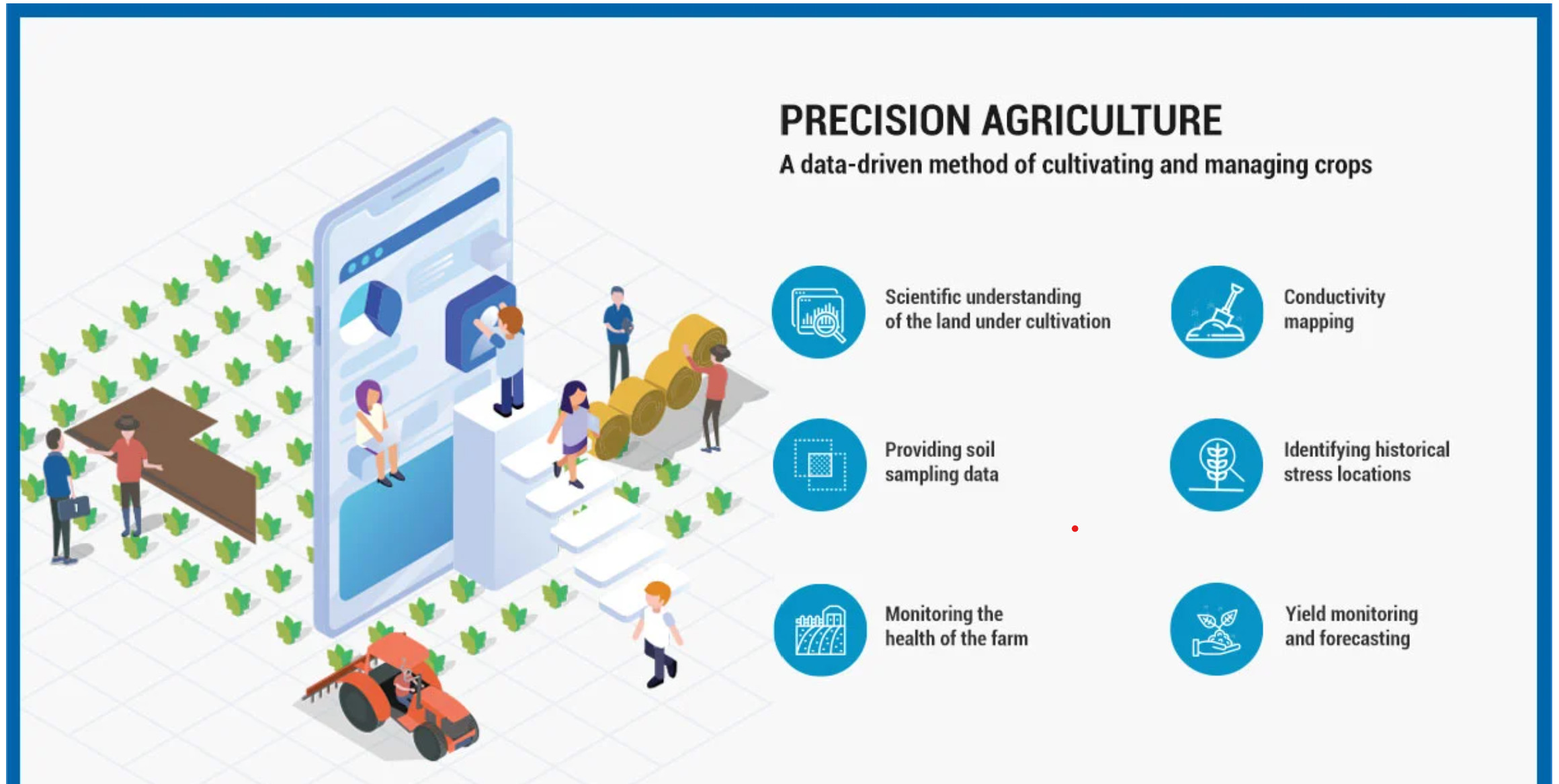
- 17 Sep 2024
In News:
The Centre is contemplating to earmark Rs 6,000 crore to promote precision farming, a modern approach that uses smart technology such as Internet of Things, Artificial Intelligence, drones and data analytics to boost production through maximal use of resources while minimising environmental impact.
Key Details:
- Union Ministry of Agriculture is planning a Smart Precision Horticulture Programme under the existing Mission for Integrated Development of Horticulture (MIDH) scheme.
- It will cover 15,000 acres of land in five years from 2024-25 to 2028-29 and is expected to benefit about 60,000 farmers.
- At present, the Agriculture Infrastructure Fund (AIF), launched during Covid-19, has provisions for financing infrastructure projects for smart and precision agriculture.
- Under AIF, individual farmers as well as farmers’ communities such as Farmer Producer Organization, Primary Agricultural Credit Societies and SHGs are eligible for loans with interest subvention of 3% for using technological solutions in farm practices. These practices include farm/ harvest automation; purchase of drones, putting up specialised sensors on field; use of blockchain and AI in agriculture; remote sensing and Internet of Things (IoT).
Positive impact
- Smart and precision agriculture maximises use of resources like water, fertilisers and pesticides to increase production quality and quantity, all while insulating farmers from vagaries of climate change and other uncertainties, besides ensuring sustainable farming.
Apart from offering financial support, the Centre is also considering collaborating with the Netherlands and Israel, where tech-based modern farming solutions are being used, through Centres of Excellences (CoEs). The number of CoEs is likely to be 100 in the next five years. Under Indo-Israel Agriculture Project, 32 CoEs have already been set up across 14 states.
The Centre has also set up 22 Precision Farming Development Centres (PFDCs) across the country to test new technologies and modify them according to local needs.
According to the Ministry, these 22 PFDCs are located across State/Central Agricultural Universities, ICAR Institutes and IITs in TN, Karnataka, Madhya Pradesh, Odisha, Rajasthan, Haryana, Telangana, West Bengal, Ladakh, UP, Punjab, Gujarat, Uttrakhand, Maharashtra, Chhattisgarh, Jharkhand, Bihar, Himachal Pradesh, Kerala, Manipur and Assam. Besides, funds are released to states/UTs for projects involving use of AI and machine learning, under schemes like the National e-Governance Plan in Agriculture.
What is Precision Agriculture?
- Precision Agriculture is a farm management concept that revolves around the process of observing, measuring, and responding to various inter-and intra-field variability inputs for modern agriculture.
- Popular definitions of Precision Agriculture (PA) or Site-Specific Crop Management (SSCM) describe the term as a technology-enabled approach to farming management that observes, measures, and analyzes the needs of individual fields and crops.
- The goal of precision agriculture is to increase efficiency and productivity, reduce input costs, and improve environmental sustainability.
- Key Advantages:
- A refined set of cultivation practices and choice of crops based on the suitability of land
- Elimination of volatility and risk
- Waste management
- Reduced production costs
- Minimum environmental impact
- Optimized use of fertilizers
- Water management with optimized irrigation practices
- Improved soil health
Pink Bollworm Attack
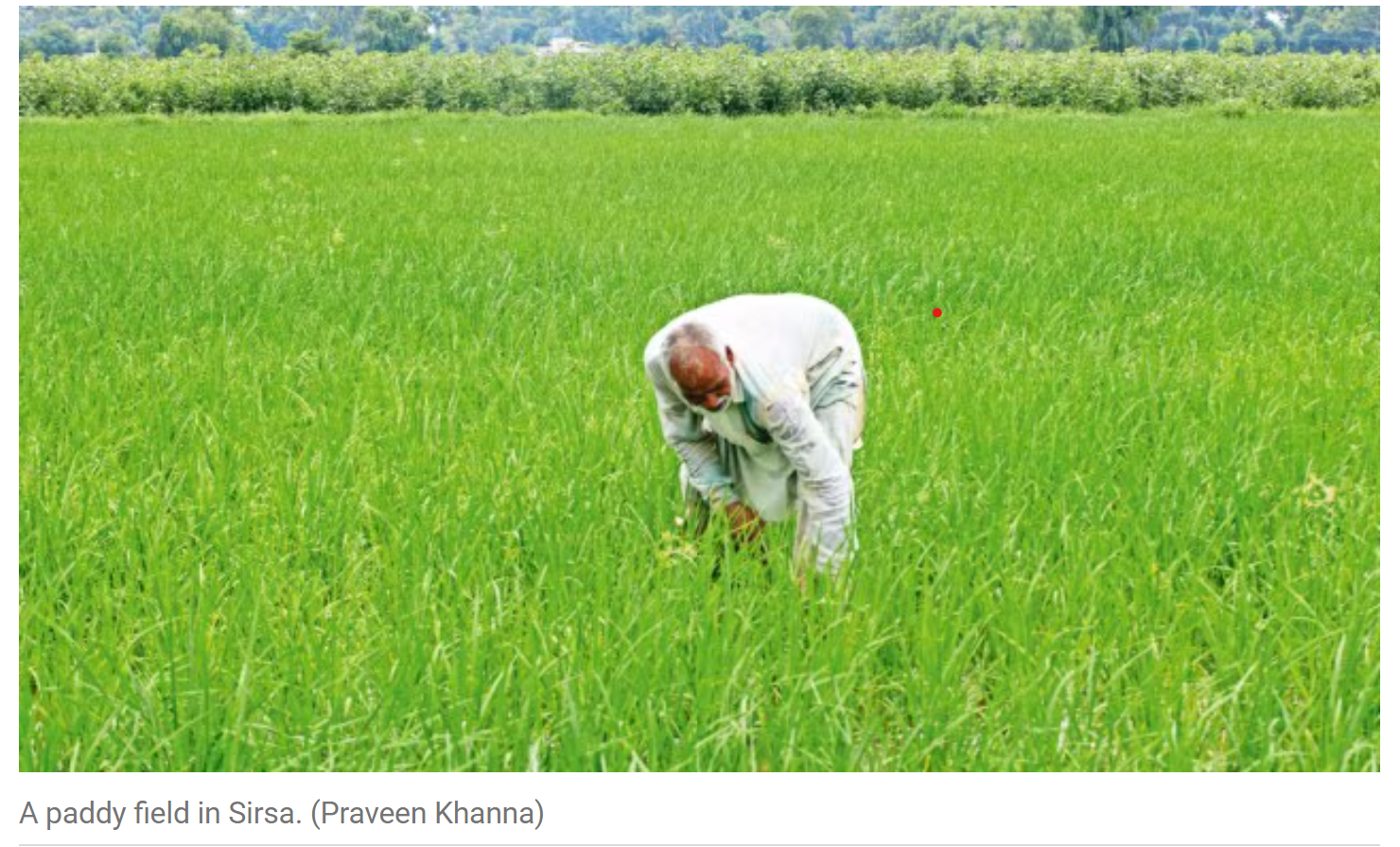
- 16 Sep 2024
In News:
Haryana has seen an overall fall in acreage under cotton cultivation to 4.76 lakh hectares (lh) this kharif season from 6.65 lh in 2023. This has been accompanied by an increase in the area under rice from 15.20 lh to an all-time-high of 16.44 lh in the state.
Key Details:
- The reduction in the cotton area — also reported in neighbouring Rajasthan (from 7.91 lh to 5.13 lh) and Punjab (2.14 lh to 1 lh) — has been attributed mainly to PBW infestation.
- In May-June this year, at the time of sowing, the price of kapas (raw unginned cotton) averaged Rs 6,700-6,800 per quintal in Haryana mandis. This was against the average Rs 11,100-11,200 per quintal two years ago.
Pink Bollworm (PBW) Infestation:
- Impact: The pink bollworm has devastated cotton yields by attacking the bolls, which affects the weight and quality of the cotton. This pest has been particularly damaging since its appearance in 2017-18 and has caused significant losses in Haryana, Rajasthan, and Punjab.
- Spread: PBW spreads through the air and infected crop residues, which harbor larvae and spread to future crops. This infestation has led to a dramatic decrease in cotton acreage.
The spread of pink bollworm
- The pink bollworm first appeared in north India during the 2017-18 season in a few districts in Haryana and Punjab, primarily cultivating Bt cotton, and spread to Rajasthan by 2021.
- PBW primarily spreads through the air. Residue of infected crops, often left by farmers on the field to be used as fuel, can also harbour PBW larvae which can then infect future crops. Infected cotton seeds are another reason behind the pest’s spread.
Economic Impacts:
- Price Decline: The price of kapas (raw cotton) has dropped from Rs 11,100-11,200 per quintal to Rs 6,700-6,800, significantly impacting farmers’ profitability.
- Farmer Losses: Farmers like Shyam Sundar have reported substantial losses due to low yields and poor quality, leading them to switch to more profitable and reliable crops like paddy and guar.
Transition to Paddy
Water Requirements:
- Challenges: Paddy requires much more water compared to cotton. Farmers need to flood their fields, which is challenging in regions where groundwater is saline or limited.
- Current Practices: Despite the increased water requirements, some farmers have transitioned to paddy due to its potentially better economic returns, especially when paddy prices are relatively high.
Monsoon and Irrigation:
- Weather Dependence: The monsoon this year has been favorable, allowing some farmers to successfully grow paddy. However, reliance on monsoon and supplementary irrigation from tubewells is not sustainable in the long term.
Government and Expert Perspectives
Government Incentives:
- Subsidies: The Haryana government is offering incentives for farmers switching to alternative crops and using water-saving techniques like direct seeding of paddy.
- Support: While there is support available, the effectiveness and reach of these measures are mixed, and some farmers have faced issues with insurance claims and financial aid.
Expert Opinions:
- Temporary Solution: Experts caution that while switching to paddy may be a temporary solution, it is not sustainable long-term due to water scarcity and environmental concerns.
- Environmental Impact: Paddy cultivation contributes to higher carbon and methane emissions, which adds to the environmental challenges in the region.
Economic and Industry Implications
Cotton Industry Concerns:
- Reduced Production: Lower cotton production affects the entire supply chain, from textile manufacturers to cottonseed oil and meal producers.
- Potential Recovery: There is hope that reduced PBW infestation this year may lead to a recovery in cotton yields, but the extent of this recovery remains uncertain.
AgriSURE Fund and Krishi Nivesh Portal

- 04 Sep 2024
In News:
- Recently, the Union agriculture minister Shivraj Singh Chouhan launched two initiatives — a fund aimed at boosting farm-sector startups, and a single-window portal to process investments — as part of a slew of measures being taken by Prime Minister Narendra Modi-led government in its third term to bolster the farm economy.
Key Details:
- AgriSure is a ?750-crore fund established to support agricultural startups.
- Krishi Nivesh Nidhi is a portal designed to expedite the clearance of project proposals.
- Both initiatives aim to enhance farm incomes.
Awards for Credit Disbursal:
- Scheduled banks were recognized for their credit disbursals under the government’s agriculture infrastructure fund.
- First prize: State Bank of India (SBI).
- Second prize: HDFC Bank.
- Third prize: Canara Bank.
Significance of Agriculture Sector:
- Agriculture contributes 16% to India’s GDP.
- Farmers play a crucial role as both producers and consumers in the economy.
PM Modi’s Strategy to Double Farmers’ Incomes:
- The strategy includes:
- Increasing output.
- Reducing input costs.
- Ensuring profitable prices.
- Promoting crop diversification.
- Supporting natural farming.
- Enhancing value addition to crops.
Details of AgriSure Fund:
- Blended capital fund with a total corpus of ?750 crore:
- ?250 crore each from the Department of Agriculture and NABARD.
- ?250 crore to be raised from financial institutions.
- Managed by NabVentures, a subsidiary of NABARD.
- Provides both equity and debt support to startups and agripreneurs.
- Focuses on high-risk, high-impact activities within the agriculture value chain.
Agriculture Infrastructure Fund:
- Mobilized projects worth ?78,000 crore with ?45,000 crore in financing so far.
- Expanded areas of coverage approved by the Union Cabinet on August 28.
- Aims to create durable farm assets, such as warehouses and processing plants.
- Can be used by agricultural produce marketing committees (APMCs) for market facility improvements.
Funding and Loan Details:
- Part of the ?20-lakh crore stimulus package introduced during the Covid-19 pandemic.
- Total funding of ?1 lakh crore over four years:
- ?10,000 crore for 2020-21.
- ?30,000 crore each for the subsequent three financial years.
- Provides medium-to-long term debt financing for rural projects.
- Interest subvention of 3% per annum on loans up to ?2 crore for seven years, with the government covering part of the interest.
Deda Method of Preserving Seeds
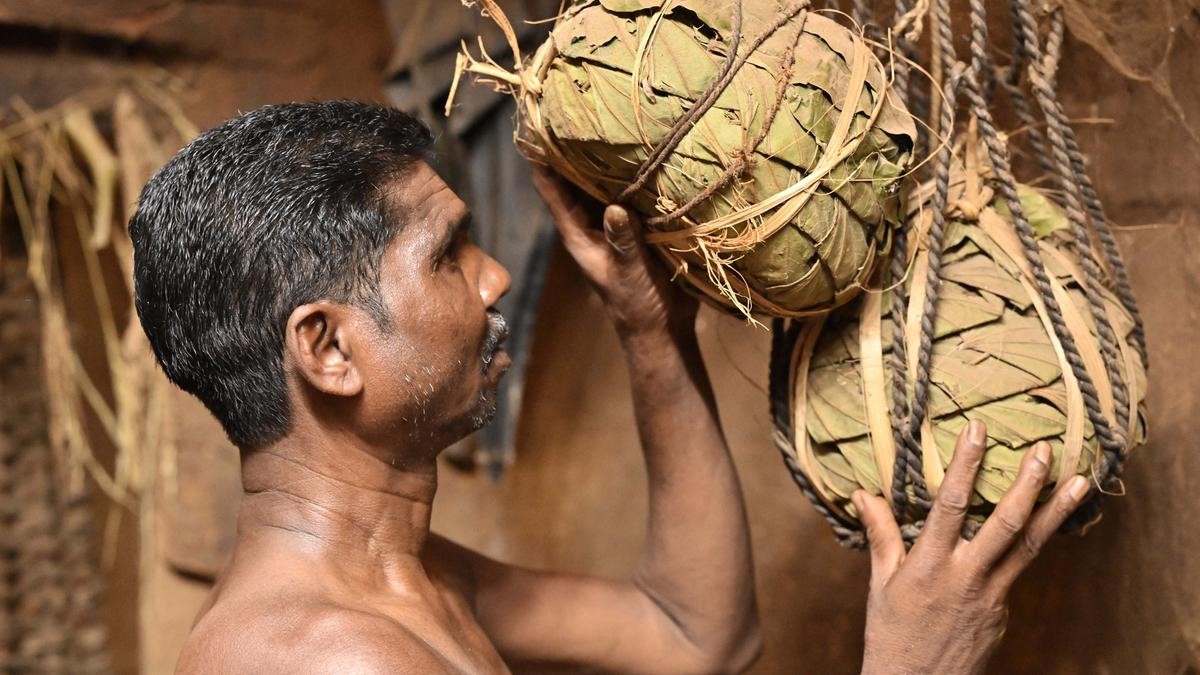
- 17 May 2024
Why is it in the News?
In his 50s, Madakam Unga, a Muria tribal farmer who migrated from Chhattisgarh and settled in the dense forests of the Godavari Valley, is still practising ‘deda’, a traditional method of preserving seeds that his ancestors handed over to his family.
What is the Deda Method?
- The Deda Method is an ancestral seed preservation technique passed down through generations.
- This unique method involves the use of natural materials to create a protective, airtight environment for the seeds, ensuring their viability for future planting.
Preservation Process:
- Seeds are packed tightly and wrapped in leaves to form a sturdy bundle resembling a boulder.
- The seed-filled leaf packages are then woven together with Siali leaves (Bauhinia vahlii), locally known as 'addakulu,' forming the distinctive deda structure.
- A deda consists of three layers:
- The innermost layer contains wood ash spread over Siali leaves.
- The ash is then covered with lemon leaves, creating a protective casing.
- Lastly, seeds are preserved within this casing and sealed, with each deda supporting up to 5kg of seeds.
Advantages:
- The Deda Method effectively protects seeds from pests and worms, ensuring their quality and viability.
- Seeds preserved using this technique can be used for cultivation for up to five years.
- This method is particularly useful for preserving the seeds of various pulses, such as green gram, red gram, black gram, and beans.
- By utilizing the Deda Method, farmers can maintain a reliable, diverse collection of seeds, contributing to sustainable agricultural practices and supporting long-term food security.
Facts About Muria Tribe:
- Location: The Muria tribe is found in the states of Telangana, Andhra Pradesh, Chhattisgarh, and Odisha.
- Language: They speak Koya, a Dravidian language.
- Population and Status: In Andhra Pradesh, the Muria, also known as 'Gutti Koyas' by native tribes, are internally displaced people (IDPs) with a population of around 6,600.
- Cultural Practices: The Muria have a progressive outlook on marriage and life.
- A notable example is the Ghotul, a communal dormitory that provides an environment for Muria youth to explore and understand their sexuality.
Recognition: While most Gutti Koya belong to the Gond or Muria communities, which are recognized as Scheduled Tribes in Chhattisgarh, they lack such recognition in Telangana.
Hydroponic Farming
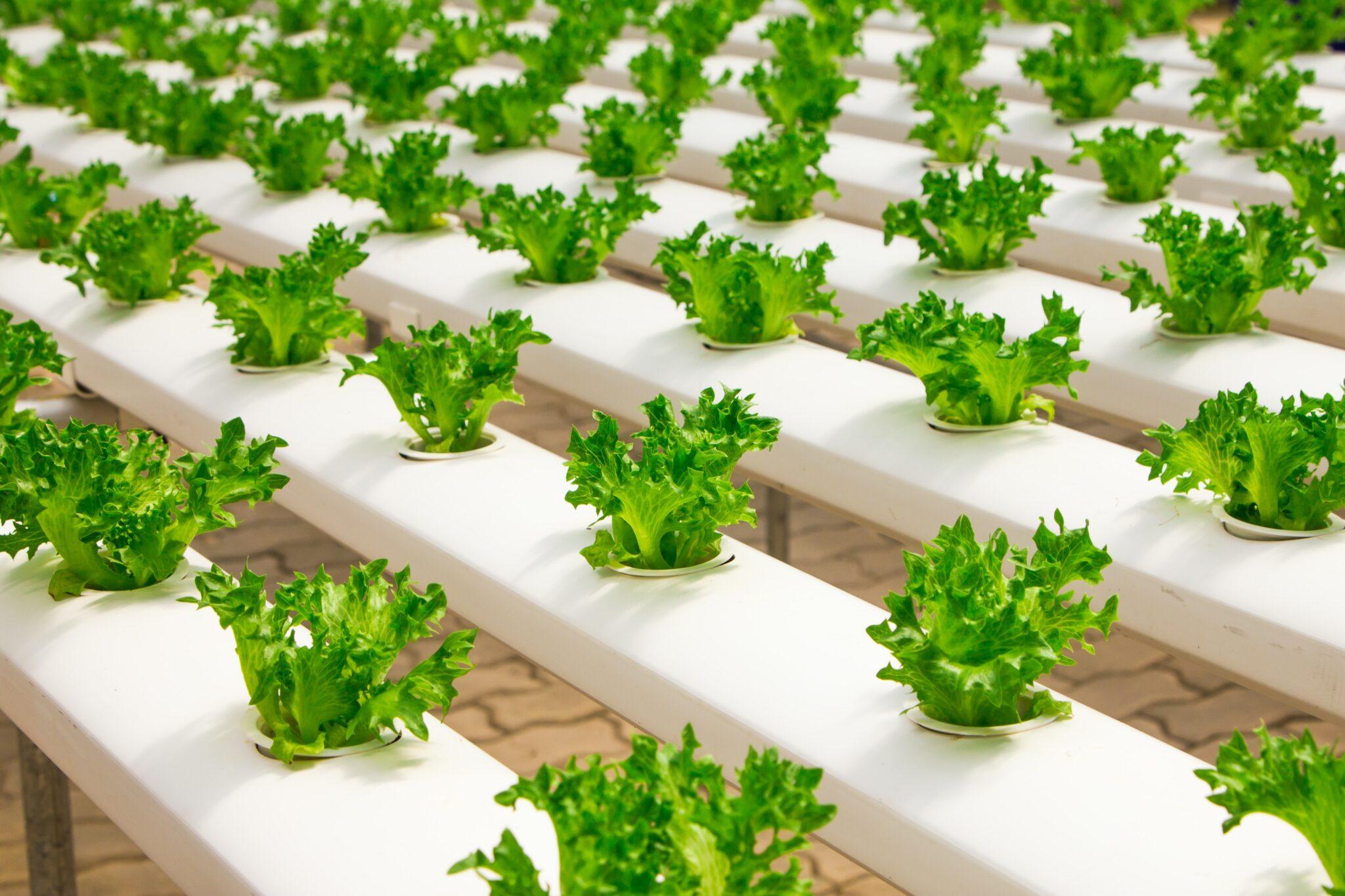
- 06 Apr 2024
Why is it in the News?
In the wake of evolving consumer preferences, India is at the forefront of an agricultural transformation, pivoting towards sustainable farming with an emphasis on health.
What is Hydroponics?
- Hydroponics is a method of growing plants without soil, utilizing nutrient-rich water as the primary source of essential minerals and elements.
- The technique involves the circulation of nutrient-enriched water through a network of pipes or channels, directly supplying the roots of plants with the necessary nourishment for their growth and development.
Key Features and Benefits:
- Soilless Cultivation: Hydroponics eliminates the need for soil by providing an alternative substrate or a soil-like medium, such as rock wool, perlite, or vermiculite, to support the plants' roots.
- Nutrient Control: This technique enables precise control over the nutrient composition, concentration, and pH levels in the water, ensuring optimal nutrient availability for plants.
- Water Efficiency: Hydroponics recirculates and reuses water, significantly reducing water consumption compared to traditional soil-based farming.
- Space Optimization: Due to the compact nature of hydroponic systems, they can be used in urban areas, greenhouses, and indoor facilities, maximizing yield per unit area.
- Year-round Cultivation: With controlled environmental conditions, hydroponics allows for continuous cultivation, regardless of seasonal changes or weather fluctuations.
- Hydroponics provides a sustainable, efficient, and adaptable approach to agriculture, with potential benefits in resource conservation, food security, and sustainable urban food production.
Hydroponics in India:
- According to a report by Datamintelligence, India’s hydroponic market is poised for a remarkable growth trajectory, with a projected Compound Annual Growth Rate (CAGR) of 13.53% by 2027, outpacing the global industry’s estimated growth of 6.8%.
- This surge underscores the vast potential of hydroponics in meeting the rising demand for sustainable food produce, particularly in metros and tier 1 cities where health-conscious consumers are willing to pay a premium for fresh, safe, and sustainably grown products.
- This transformative shift is not just a response to changing consumer preferences for fresh produce but also an adaptation to the geographical and environmental challenges that face traditional farming methods.
Suitable Regions for Hydroponic Farming:
- Hydroponic farming presents a viable solution in regions where traditional farming faces significant barriers:
- Areas with Limited Water Supply: Hydroponics drastically reduces water usage, making it ideal for drought-prone areas.
- Rocky Regions: In places where the terrain is unsuitable for soil-based agriculture, hydroponics offers a practical alternative.
- Low Soil Fertility Areas: Hydroponics bypasses the need for fertile soil, allowing cultivation in regions with poor soil quality.
- Demand-Driven Areas: Regions with a high demand for fresh products are perfect for hydroponic farms, catering to health-conscious consumers in urban and semi-urban locales
The Edge with Hydroponic Farming in India:
- Hydroponic farming’s ascendancy in India is attributed to several compelling benefits, underpinned by technological advancements that lower operational costs and facilitate scalability:
- Versatility in Location: It enables agriculture in environments traditionally deemed unsuitable, such as deserts or cold climates.
- Controlled Conditions: Farmers have precise control over nutrients, pH, and the growing environment, optimizing plant health and yield.
- Resource Efficiency: The recycling of water and nutrients significantly cuts down on input costs and environmental impact.
- Enhanced Growth Rates: Increased oxygen availability accelerates plant growth, leading to quicker harvest cycles.
- Pest and Disease Reduction: By eliminating soil, hydroponics reduces the risk of soil-borne diseases and pests.
- Higher Yields: The efficiency and controlled environment of hydroponic systems result in substantially higher crop yields.
- Labour and Maintenance Savings: The absence of weeding and traditional cultivation reduces labour requirements and costs.
- Improved Working Conditions: Elevating crops to a more accessible height improves ergonomics for farm workers, further reducing labour costs.
- No Need for Crop Rotation: Hydroponics eliminates the necessity for crop rotation, simplifying farm management.
- Reduced Transplant Shock: Plants grown hydroponically experience less stress when transplanted, enhancing survival rates.
Every village to have agricultural credit societies by 2027

- 09 Mar 2024
Why is it in the News?
Union Cooperation Minister Amit Shah Friday said that the Centre has decided to ensure formation of Primary Agricultural Credit Societies (PACS) in every village by 2027.
Context:
- Union Cooperation Minister Amit Shah recently announced the Centre's commitment to establishing Primary Agricultural Credit Societies (PACS) in every village by 2027, introducing 20 new activities to enhance their profitability.
- Emphasizing the significance of computerization in PACS, Shah highlighted its role in fostering development opportunities.
- He also inaugurated the National Cooperative Database and unveiled the 'National Cooperative Database 2023: A Report' to bridge existing gaps through comprehensive analysis.
- The database initiative progressed through three phases, including mapping approximately 2.64 lakh societies across agriculture, dairy, and fisheries sectors in the first phase.
- Subsequent phases involved data collection from various federations, banks, and mapping of the remaining 8 lakh primary cooperative societies in other sectors.
- The unveiling revealed over 8 lakh registered societies in the country, connecting more than 30 crore citizens.
What are Primary Agricultural Credit Societies (PACS)?
- PACS are grassroots cooperative credit societies, constituting the final tier in a three-tier cooperative credit system led by State Cooperative Banks (SCBs) at the state level.
- SCBs channel credit to District Central Cooperative Banks (DCCBs) operating at the district level, which collaborate with PACS, directly serving farmers.
- PACS operate as cooperative entities, with individual farmers as members and elected office-bearers from within the community. Villages may host multiple PACS.
- These societies extend short-term and medium-term agricultural loans to farmers for various farming activities.
Number of PACS in India:
- Established since 1904, India currently boasts over 1,00,000 PACS nationwide, engaging a significant member base exceeding 13 crore farmers.
- However, operational PACS stand at only 63,000, indicating the need for enhanced functionality and outreach.
Why are PACS Appealing?
- PACS offer crucial last-mile connectivity, ensuring farmers have access to capital at the onset of agricultural activities.
- They streamline credit extension processes, providing farmers with timely financial support with minimal paperwork, unlike traditional banks known for cumbersome procedures.
- PACS simplify paperwork and administrative tasks, offering farmers collective strength and assistance from PACS office-bearers.
- Unlike individual interactions required with commercial banks, PACS enable farmers to navigate loan processes collectively, reducing reliance on intermediaries.
Challenges Faced by PACS:
- Political influences often overshadow financial prudence within PACS, impacting loan recovery.
- Various committees have highlighted systemic issues within the cooperative system, including low member participation, lack of professionalism, inadequate governance, bureaucratic hurdles, and a workforce with aging and disengaged employees.
Centre increases Fair and Remunerative Prices of sugarcane

- 22 Feb 2024
Why is it in the News?
The Cabinet Committee on Economic Affairs recently approved ?340/quintal as the Fair and Remunerative Price (FRP) of sugarcane for the sugar season 2024-25 at a sugar recovery rate of 10.25%.
What is the Fair and Remunerative Price (FRP)?
- FRP was introduced by the government in 2009 by an amendment to the Sugarcane (Control) Order, 1966.
- It replaced the Statutory Minimum Price (SMP) on the Commission for Agricultural Costs and Prices (CACP) consultation.
- The FRP system assured timely payment to farmers, irrespective of the profit and loss to sugar mills.
- Further, the new system made it mandatory for sugar mills to pay the farmers within 14 days of delivery of sugarcane.
- Additionally, the FRP system introduced grading on the basis of sugar recovery rate from sugarcane wherein a premium was paid to the farmer on higher recovery and a reduction in rates on lower recovery.
- The FRP is based on the Rangarajan Committee report on reorganising the sugarcane industry.
Factors Considered for Announcing FRP:
-
- Cost of production of sugarcane
- Return to the growers from alternative crops and the general trend of prices of agricultural commodities
- Availability of sugar to consumers at a fair price
- The price at which sugar produced from sugarcane is sold by sugar producers
- Recovery of sugar from sugarcane
- The realisation made from the sale of by-products viz. molasses, bagasse and press mud or their imputed value
- Reasonable margins for the growers of sugarcane on account of risk and profits
Effect of the New FRP:
- Sugar production in India was hit hard in the October-December 2023 quarter as production fell by 11.21 million metric tonnes;
- It was 12 million in the same quarter the previous year.
- The increase in FRP is going to increase the cost for producers.
- The increased FRP will benefit over five crore sugarcane farmers in the country, however, the increase in production cost could affect end-consumers as well.
- Factors such as FRP hikes, akin to MSP, make it attractive to farmers but also increase prices in the local market as mills pass on that cost to consumers
Framework for Voluntary Carbon Market in Agriculture Sector (Down To Earth)

- 30 Jan 2024
Why is it in the News?
The central government recently launched a framework to promote voluntary carbon markets in the agriculture sector.
What are Carbon Markets?
- Carbon markets are trading systems in which carbon credits are sold and bought.
- Companies or individuals can use carbon markets to compensate for their greenhouse gas emissions by purchasing carbon credits from entities that remove or reduce greenhouse gas emissions.
- One tradable carbon credit equals one tonne of carbon dioxide or the equivalent amount of a different greenhouse gas reduced, sequestered or avoided.
- When a credit is used to reduce, sequester, or avoid emissions, it becomes an offset and is no longer tradable.
Why are Carbon Markets Important?
- Scientists warn that 2°C of warming will be exceeded during the 21st century unless we achieve deep reductions in GHG emissions now.
- Effective action will require concerted and sufficient investment, knowing also that the costs of inaction will be far higher.
- The latest IPCC report finds all countries are falling way short, with financial flows three to six times lower than levels needed by 2030 – and even starker differences in some regions of the world.
- Many countries are turning to carbon markets as a key component in driving and financing the necessary transformation to tackle the climate crisis.
How Many Types of Carbon Markets Are There?
- There are broadly two types of carbon markets: compliance and voluntary.
- Compliance markets are created as a result of any national, regional and/or international policy or regulatory requirement.
- Voluntary carbon markets (VCM)– national and international – refer to the issuance, buying and selling of carbon credits, on a voluntary basis.
- The current supply of voluntary carbon credits comes mostly from private entities that develop carbon projects, or governments that develop programs certified by carbon standards that generate emission reductions and/or removals.
Importance of Establishing a VCM Framework in the Agricultural Sector:
- Emission Concerns: Agriculture in India contributes approximately 15% of the nation's greenhouse gas emissions, highlighting the urgent need for mitigation strategies.
- Vulnerability: With around 50% of cultivated land being rainfed and more than 80% of farmers categorized as small or marginal, the sector is highly susceptible to the impacts of climate change.
- National Mission on Sustainable Agriculture (2010): This initiative focuses on promoting adaptation measures such as agroforestry, micro irrigation, and soil health management, which not only reduce emissions but also offer opportunities for carbon sequestration.
- Additional Income Opportunities: Through the implementation of these practices, farmers can potentially generate additional income streams.
Digital Twins (TOI)

- 25 Nov 2023
Why is it in the News?
Recently, the Survey of India (SoI) and Genesys International, a prominent Indian mapping company, revealed a strategic collaboration for the implementation of a three-dimensional (3D) digital twin-mapping initiative in India.
About Digital Twin:
- Digital twins are digital representations of physical objects, people or processes.
- They aid decision-making through high-fidelity simulations of the twinned physical system in real-time and are often equipped with autonomous control capabilities.
- These replicas serve as dynamic and detailed counterparts, providing a real-time, data-driven simulation of their physical counterparts.
- The concept of digital twins has gained prominence with the advent of technologies like the Internet of Things (IoT), data analytics, and machine learning.
- In essence, a digital twin continuously collects and processes data from its physical counterpart, offering a comprehensive view of its behavior, status, and interactions.
- This real-time synchronization enables organizations to monitor, analyze, and understand the performance of physical assets or processes more effectively.
Applications:
- Manufacturing Sector: One primary application of digital twins is in the manufacturing sector.
- Manufacturers use digital twins to create virtual models of products and production processes.
- This allows for simulation, analysis, and optimization before physical prototypes are built, leading to reduced development costs and improved product quality.
- Healthcare: In healthcare, digital twins are employed to create personalized models of patients.
- These models, based on individual health data, help in predicting health outcomes, optimizing treatment plans, and advancing medical research.
- Transportation: Transportation industries utilize digital twins for optimizing logistics and predictive maintenance.
- For example, digital twins of aircraft engines can simulate performance under various conditions, aiding in proactive maintenance and minimizing downtime.
- Urban Planning: Urban planning benefits from digital twins by creating virtual models of entire cities.
- This assists in designing and optimizing infrastructure, managing resources efficiently, and planning for future growth and development.
- Industries: In industrial settings, digital twins of production processes enable real-time monitoring, troubleshooting, and optimization, leading to increased efficiency and reduced downtime.
Data-driven Innovations in Agriculture (PTI)
- 15 Sep 2023
What is the News ?
The National Bank for Agriculture and Rural Development (Nabard) has teamed up with the United Nations Development Programme (UNDP) in India to jointly develop data-driven innovations for the benefit of smallholder farmers in agriculture and food systems.
Facts About:
- This partnership aims to improve the well-being of smallholder farmers by jointly using open-source data for product development, technology transfer, and policy formulation.
- It focuses on enhancing climate resilience in agriculture and involves sharing collaborative digital resources like DiCRA (Data in Climate Resilient Agriculture).
- DiCRA offers access to essential geospatial data related to climate-resilient agriculture and is curated by UNDP and partner organizations.
- This collaboration represents a significant opportunity to harness data and present it as a digital public infrastructure for India's rural farming community.
- Such open data innovations can promote best practices, optimize agricultural investments, and bolster the resilience of smallholder farmers, including women, against various challenges.
India's Sugar Surplus and its Impact on Agriculture (The Hindu)

- 07 Aug 2023
What is the News ?
India became the world’s top sugar producer in 2021-2022, surpassing Brazil, but the extensive use of resources in sugar production is depleting rapidly, leading to a potential crisis in the future.
Facts About:
The Factors Behind Excessive Sugar Production
- The phenomenon of India's excess sugar production can be attributed to a confluence of factors, including government policies and measures aimed at promoting sugarcane cultivation. At the heart of this lies the fair and remunerative price (FRP) scheme, a government initiative ensuring that sugar mills pay sugarcane farmers a minimum price, thereby ensuring their fair profits
- State governments have further incentivized sugarcane cultivation through substantial subsidies, which some critics argue are aimed at securing the votes of farmers in politically influential rural regions.
- The repercussions of these policies have led to a significant sugar surplus, driving up exports to record levels. However, this expansionary approach has not escaped global scrutiny. Brazil, Australia, and Guatemala raised objections with the World Trade Organization (WTO), alleging that India's excessive export subsidies and domestic support violate international trade rules. The subsequent ruling against India by the WTO underscored the global ramifications of this sugar surplus.
Addressing the Excess Sugar Production: Ethanol as a Solution
- To mitigate the challenges posed by surplus sugar production, the Indian government has explored alternative avenues, with a focus on diverting excess sugar to ethanol production. Ethanol, a versatile organic compound derived from fermenting sugarcane molasses or sugar, has a range of applications in various industries, from alcoholic beverages to chemicals and cosmetics.
- In the realm of transportation, ethanol-blended petrol (EBP) has emerged as an effective strategy to reduce harmful emissions from vehicles, contributing to reduced crude oil imports and greenhouse gas emissions.
- The government's Ethanol Blended Petrol (EBP) program, initiated in 2003, has made significant strides, aiming to achieve a blending rate of 20% by 2025. Reductions in the Goods and Services Tax (GST) on ethanol have further supported this transition.
- Efforts to channel a substantial portion of sugar towards ethanol production have yielded positive results, highlighting a potential solution to the problem of excess sugar.
Groundwater Depletion and Environmental Consequences
- While India's EBP program has succeeded in reducing certain imports and emissions, it has also unearthed environmental concerns associated with sugarcane cultivation. The intensive water requirements of sugarcane, coupled with over-cultivation, have significantly impacted groundwater resources. This trend is particularly pronounced in India's top sugarcane-growing states, which rely heavily on groundwater for irrigation.
- With sugarcane demanding approximately 3,000 mm of rainfall for optimal growth, regions that typically receive 1,000-1,200 mm of rainfall resort to excessive groundwater extraction from confined aquifers. A startling statistic emerges – the cultivation of 100 kg of sugar necessitates a staggering two lakh liters of groundwater for irrigation. This alarming scenario has escalated concerns, particularly in drought-prone and groundwater-stressed areas, threatening the availability of this vital resource.
Sustainable Solutions and the Path Forward
- To safeguard India's agricultural sector from a looming crisis and ensure its long-term sustainability, a multifaceted approach is imperative. While the allure of financial gains from sugar surplus and exports is undeniable, a shift towards balanced and sustainable agricultural practices is essential.
Diversified Subsidy Schemes
- A crucial step involves reevaluating incentive structures that disproportionately favor sugarcane cultivation over other crops. By introducing comprehensive and fair subsidy schemes for a variety of crops, farmers can be encouraged to diversify their cultivation practices. Such measures can prevent monocultures, promote equitable income distribution, and contribute to more efficient resource utilization.
Environmentally Responsible Cultivation
- The adoption of environmentally conscious cultivation practices holds the key to mitigating the groundwater depletion crisis. Implementing methods such as drip irrigation, which directs water directly to the roots of sugarcane plants, can significantly reduce water consumption compared to traditional flood irrigation techniques. Government support through subsidies for setting up drip irrigation systems can accelerate this transition.
Integrated Water Management
- India's agricultural landscape requires a comprehensive approach to water management, encompassing rainwater harvesting, wastewater treatment, and improved canal irrigation networks. By minimising stress on groundwater reservoirs and exploring alternative water sources for irrigation, the strain on vital resources can be alleviated.
Investment in Research
- Despite significant strides, gaps remain in understanding groundwater availability and distribution. Investing in comprehensive groundwater research and data collection is essential for informed decision-making and sustainable resource management.
Conclusion:
As India assumes a prominent role in the global agricultural arena, the imperative for sustainability becomes increasingly apparent. While the achievements in sugar production are commendable, the nation must navigate the delicate balance between economic gains and environmental responsibility. By reassessing subsidy structures, promoting diversified cultivation practices, and embracing environmentally conscious techniques, India can pave the way for a resilient agricultural sector that not only based on the article: meets domestic demands but also ensures the well-being of future generations.
Source: https://www.thehindu.com/sci-tech/energy-and-environment/india-excess-sugar-production-guzzling-groundwater/article67157121.ece
